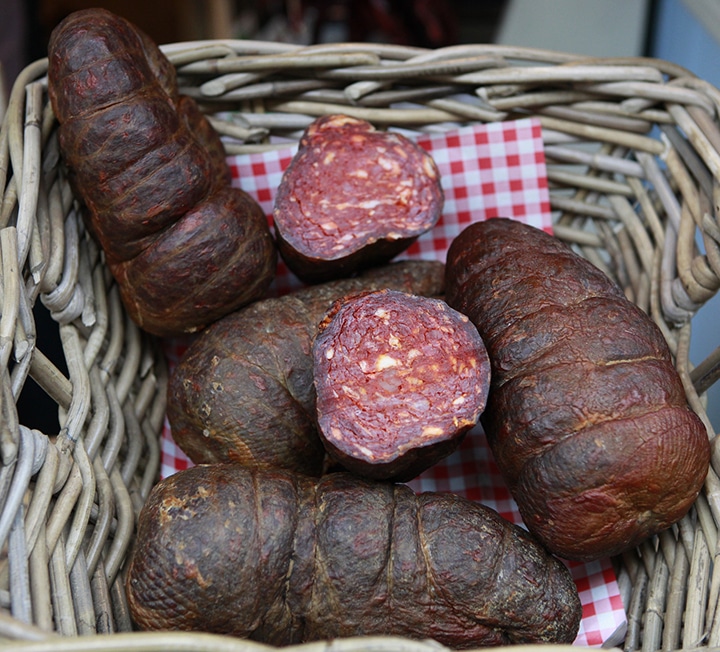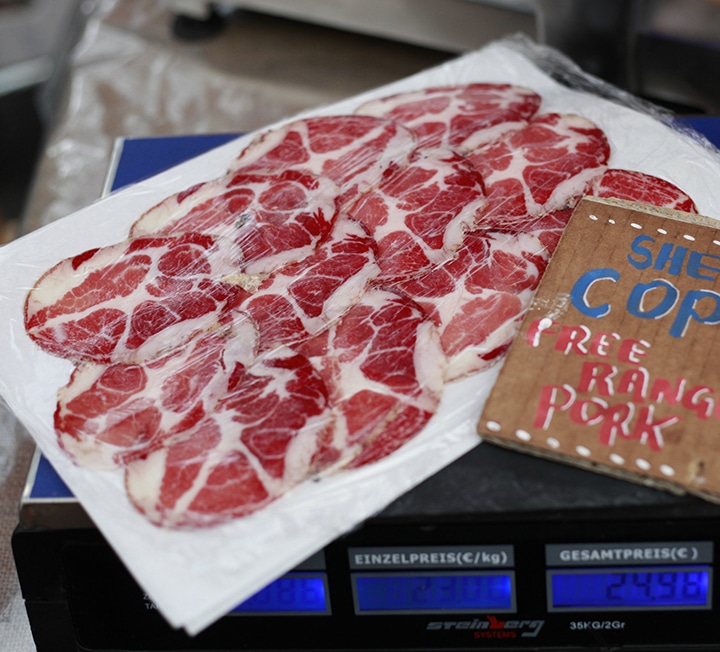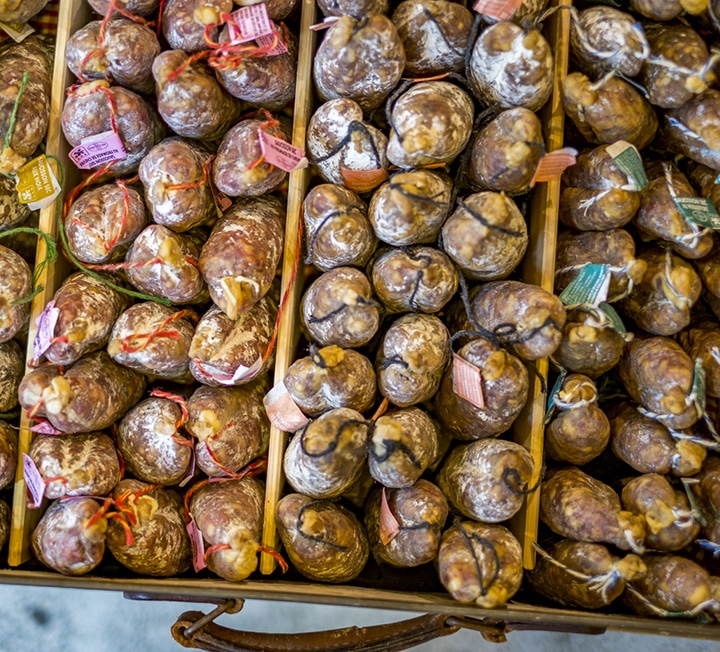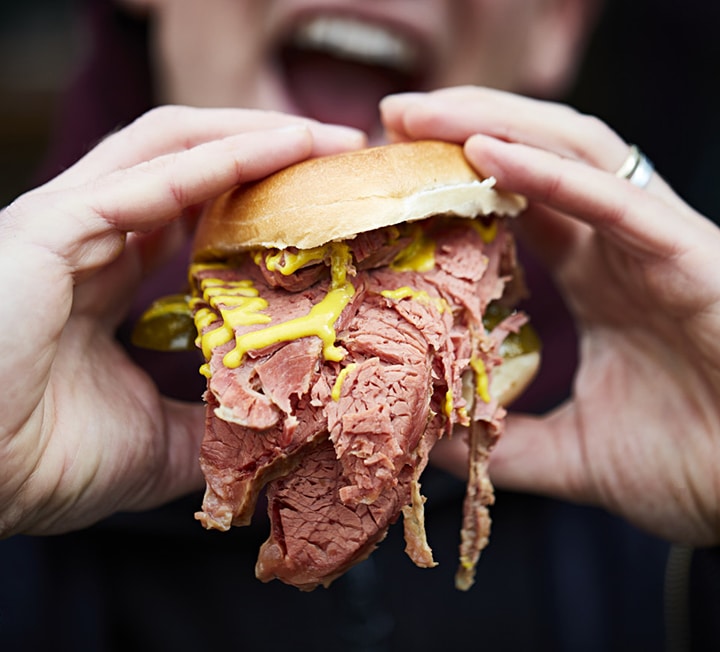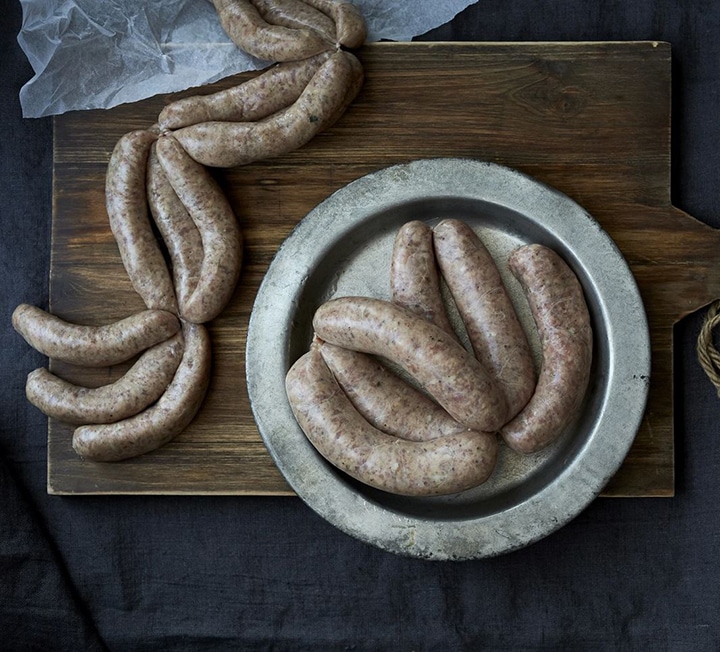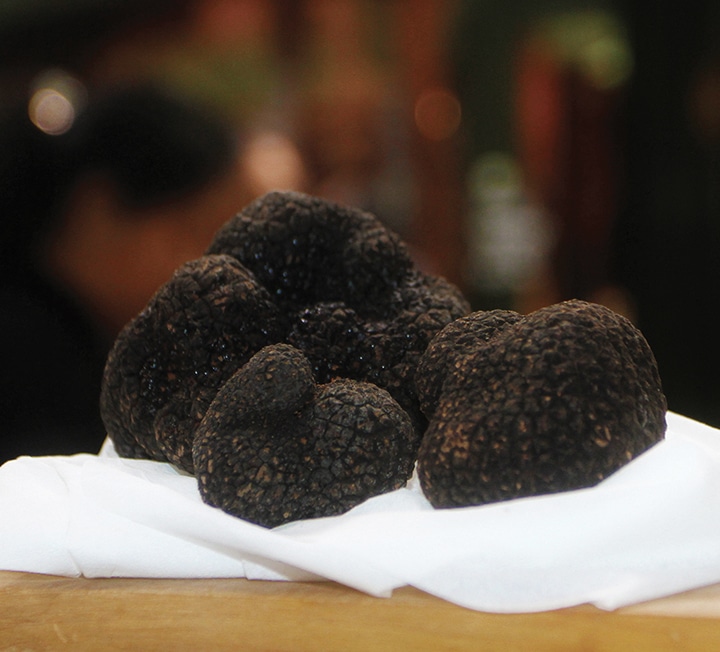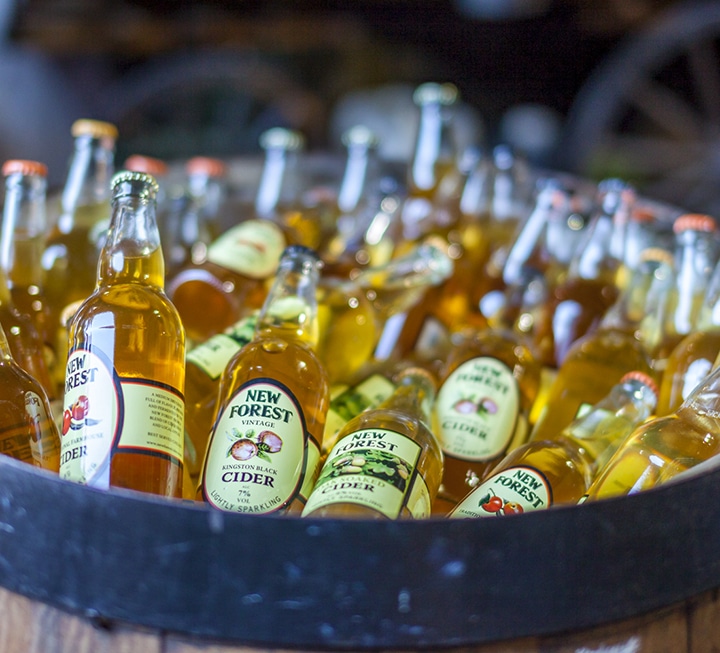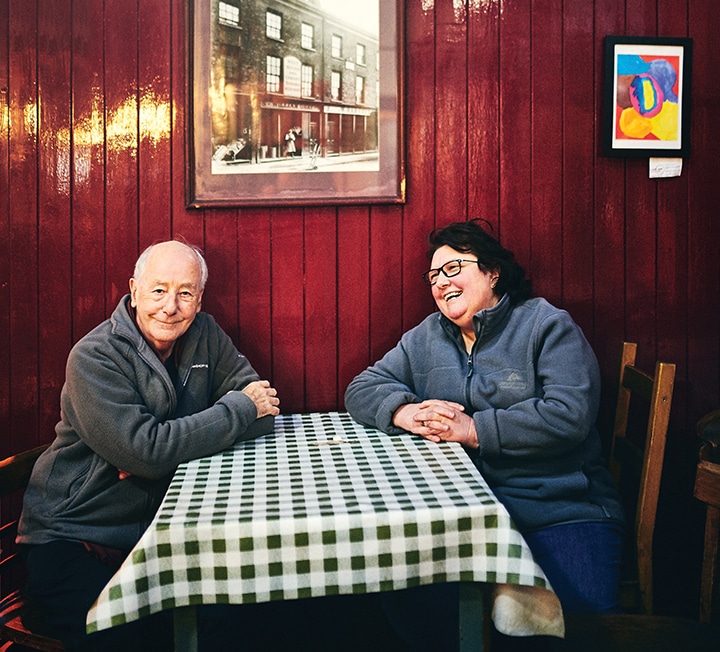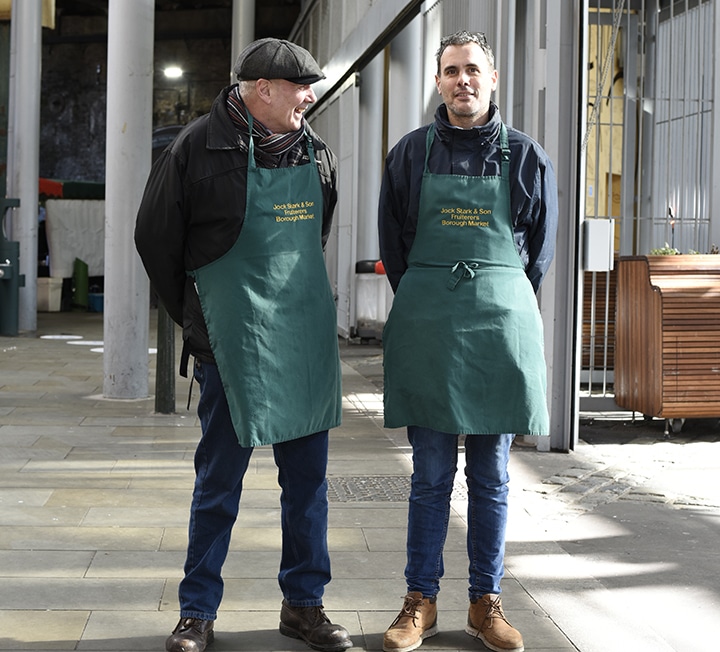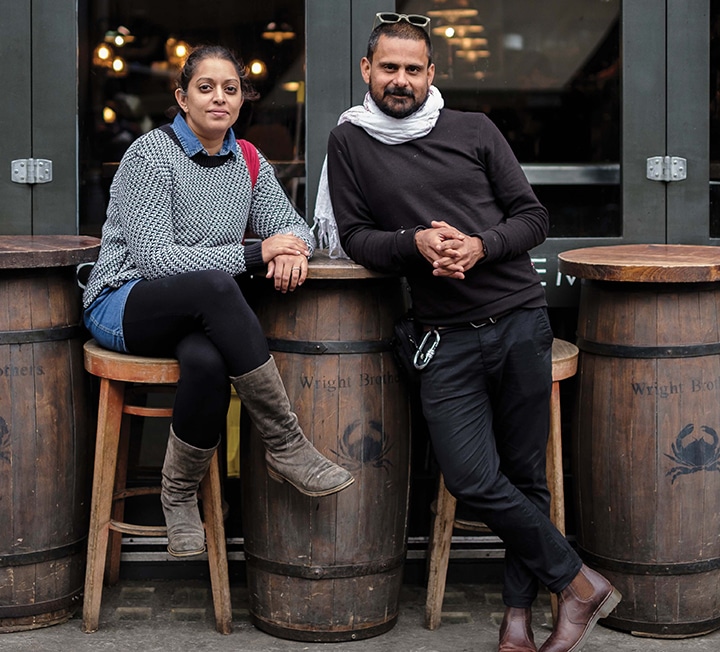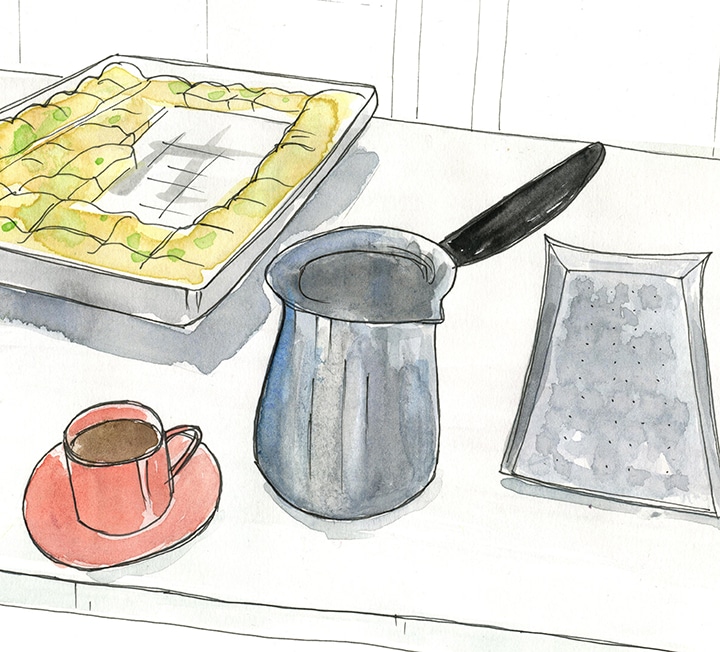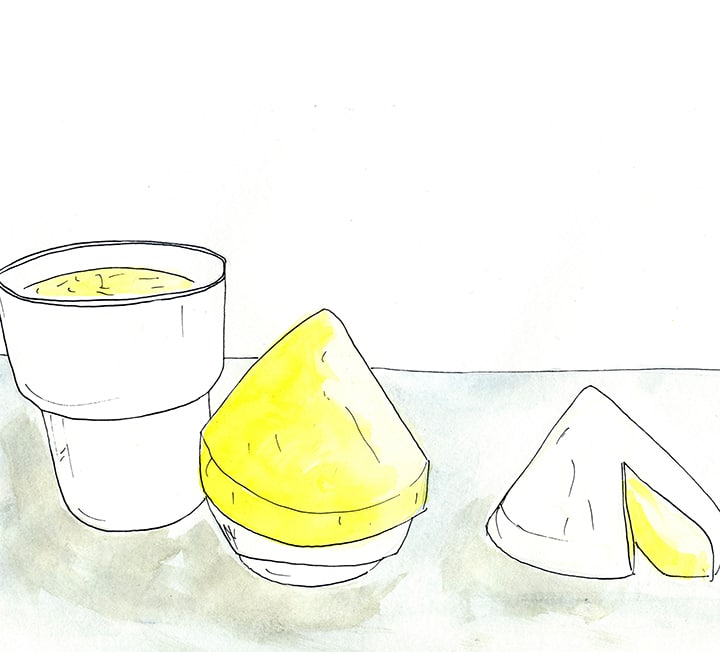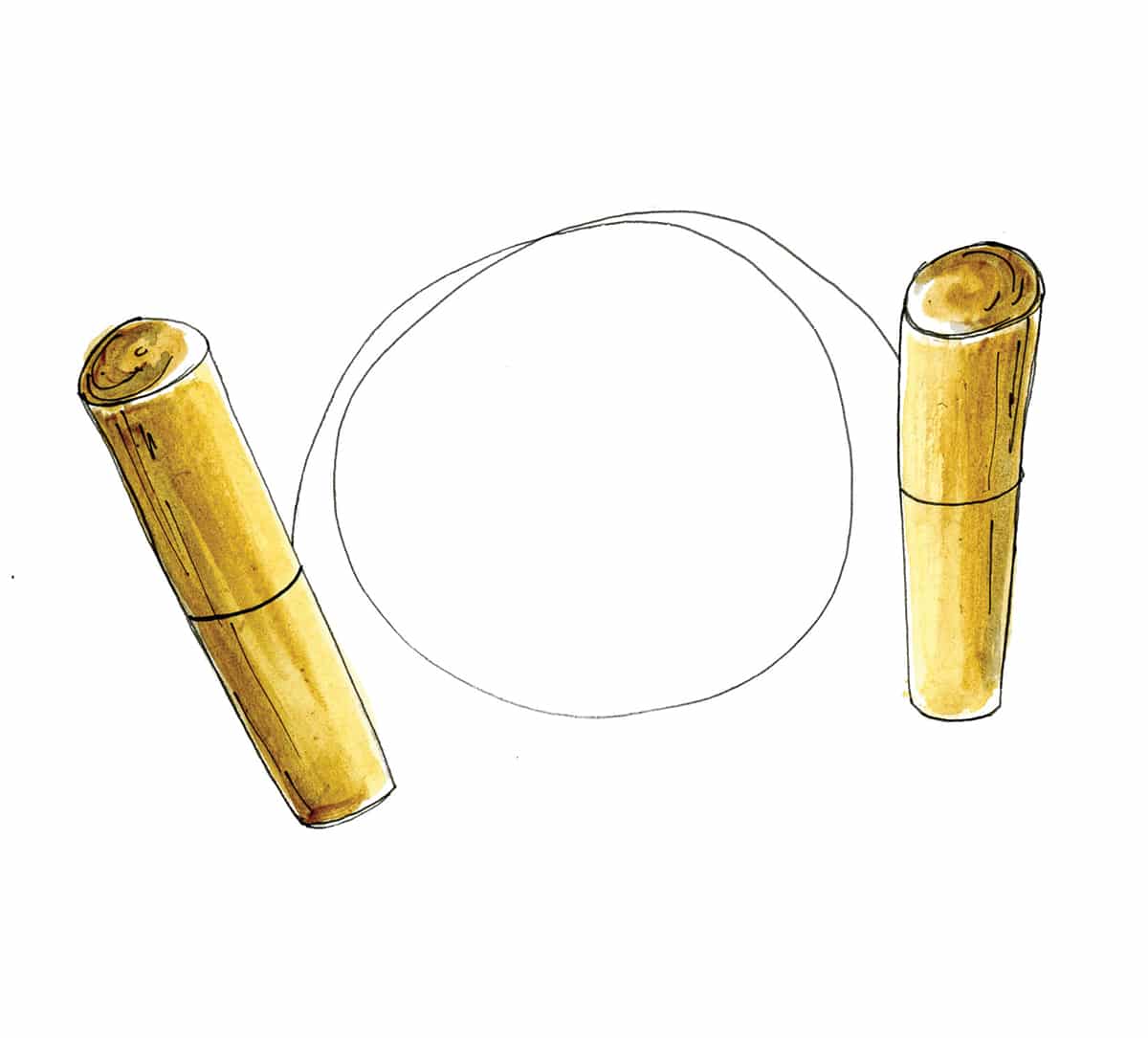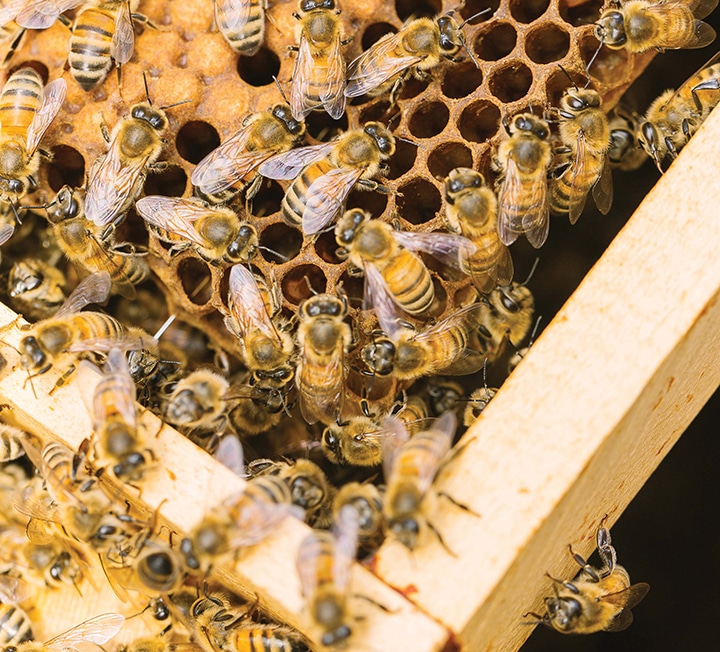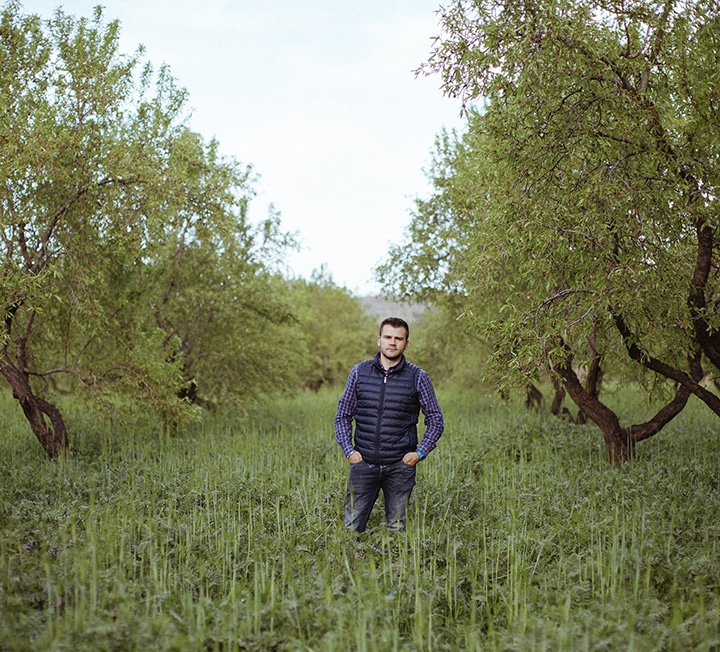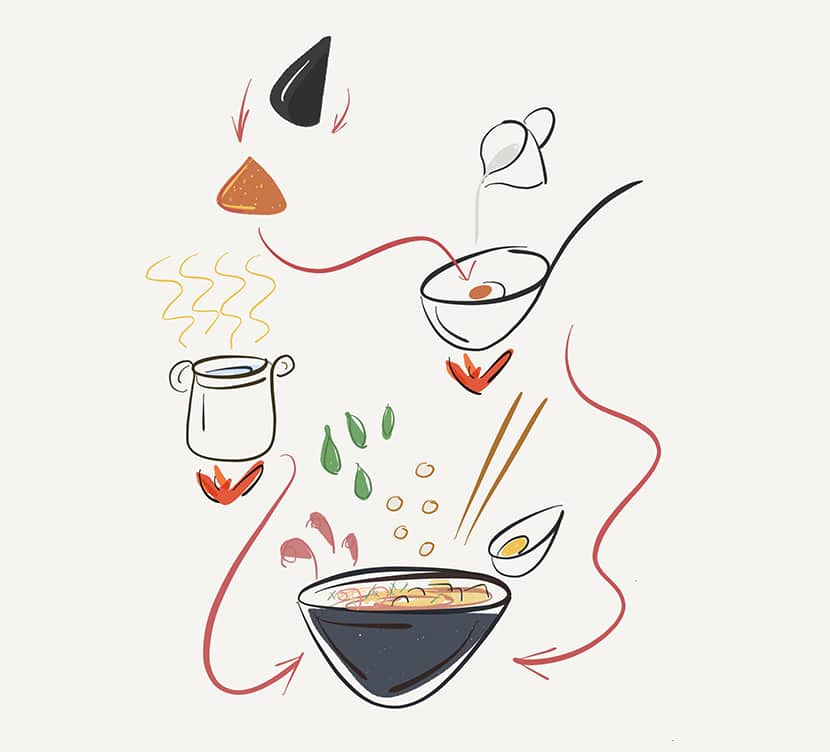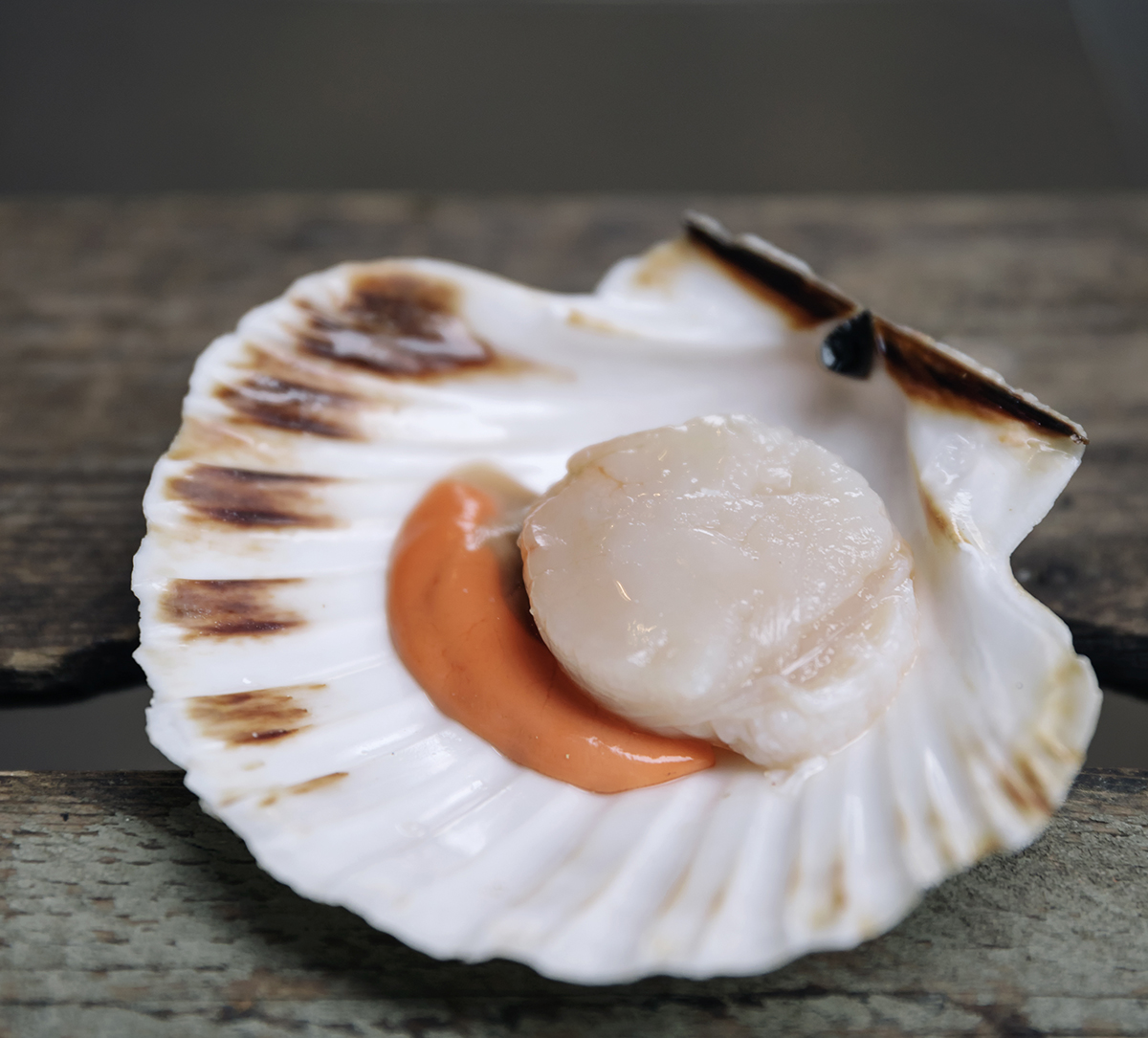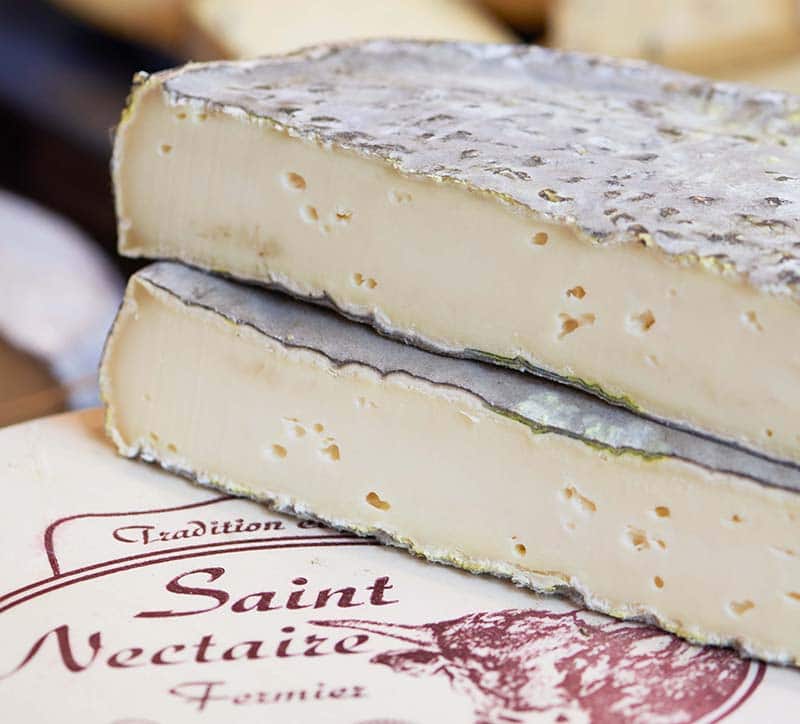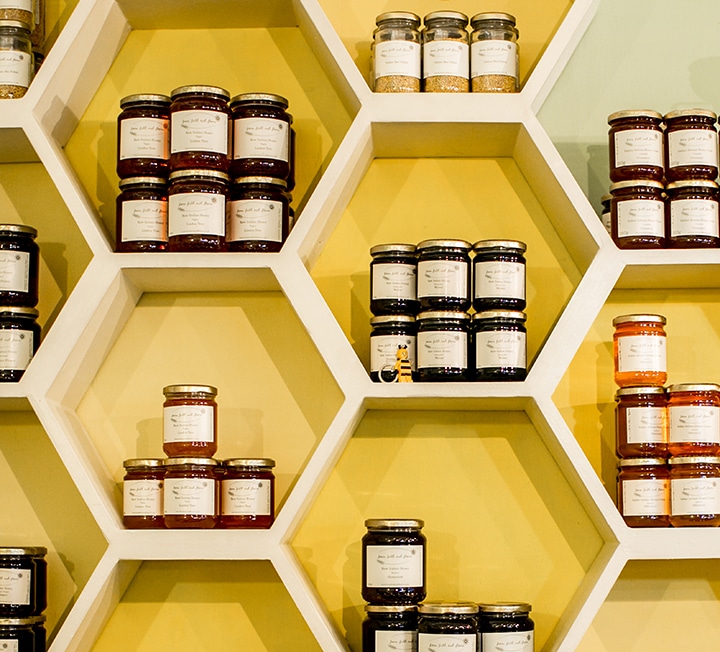Cut & dried: Spanish charcutería
Ed Smith takes a look at the nature of Spanish charcutería and explains what distinguishes this country’s cured meats from other classic European traditions
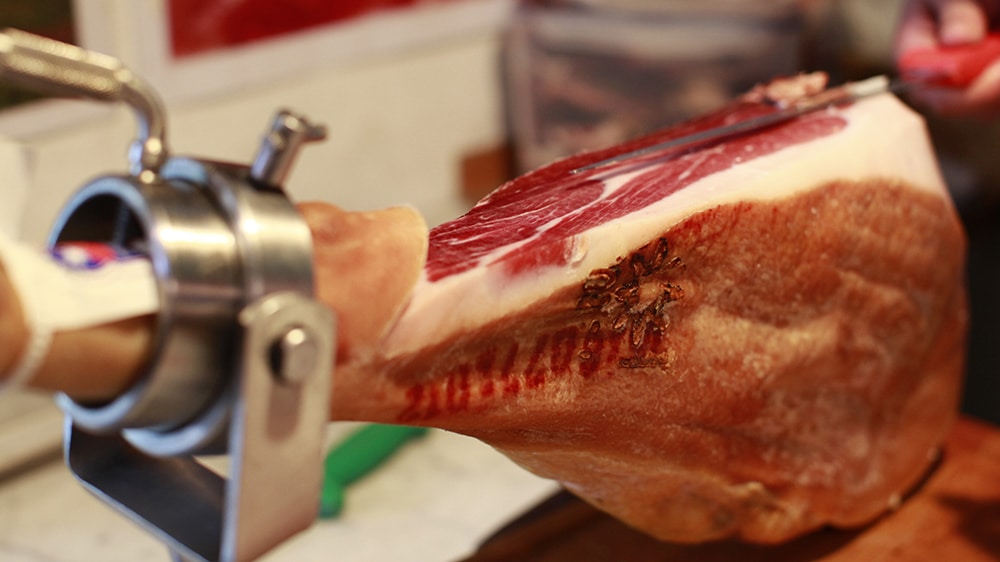

“THERE ARE DISSERTATIONS TO BE WRITTEN ON THE SUBJECT OF THE IBERIAN BLACK PIG AND THE JAMÓN MADE FROM IT”
The cured meats of Spain can be broken down into two broad categories: muscle meats and sausages, with a sub or arguably third category of ‘soft and spreadable’. Most of the products are pork-based, though there’s a tendency towards certain cuts of beef and ox, too. All of which, I hear you screaming, is more or less the same as the traditional meats of Italy, France, Germany, Scandinavia and beyond – and indeed what we’ve already discussed so far in this series.
What makes charcutería quintessentially Spanish, then? Again, as with the other countries we’ve discussed, region and terroir are important to specific styles and specialities. We’ll touch on this a little bit below, and you should get chatting to the people carving the hams at the Brindisa counter for more detail.
For me, there are two things in particular that make many (not all, but many) of Spain’s cured meats stand out: paprika and the Iberian black pig.
Paprika
So much of Spain’s cured meat is dusted or rippled with paprika – the ground red spice made from dried and sometimes smoked sweet peppers.
Paprika is the defining ingredient of chorizo – one of those rare food products that bears its original, native-tongue label wherever in the world it is reproduced or consumed (and on the rare occasion a paprika-seasoned sausage is not called chorizo, then it’s still labelled a ‘Spanish sausage’).
Paprika is also, as we’ll see, used in and on a number of other Spanish cured meats. In fact, if you take jamón out of the equation, cured meats not seasoned with paprika are very much in the minority.
The Iberian black pig
There are dissertations to be written on the subject of the Iberian black pig (and indeed jamón made from it). At this level, perhaps we can simply say that this pig – and cross breeds of it – make superior cured meats because both the levels and particular qualities of the intramuscular fat appear nearly perfect for making rich, smooth-textured and creamy meats.
The pig’s fame is largely down to jamón produced in the central and southwestern regions and centres of Huelva, Córdoba, Extremadura, Salamanca and Seville. However, as jamón is merely the ham, or rear leg of a pig, there’s much more pork to go around. You can also find chorizo, plainer sausages, loin and more made from the rest of the carcass, and they also carry the same rich, smooth, creamy qualities as the ham.
When you see ‘Iberico’ on a menu or a label, that means the pig the product is made from is (or is a cross of) an Iberian black pig.
Jamón
As mentioned, jamón is made from the back leg of a pig. In that respect, it’s essentially the same product as Italian prosciutto – salted, larded and air-dried for between nine and 48 months. A key difference to the end-product is that whereas Italians slice their hams into wafer-thin handkerchiefs using a mechanical slicer, most Spanish hams are hand-carved. It has been suggested that this is largely because the Italian industry embraced machinery faster than the Spaniards. But there must also be something in the character of Spanish hams that they taste particularly good carved into thin squares.
The most iconic Spanish ham (and perhaps the single most iconic Spanish thing?!) is jamón ibérico.
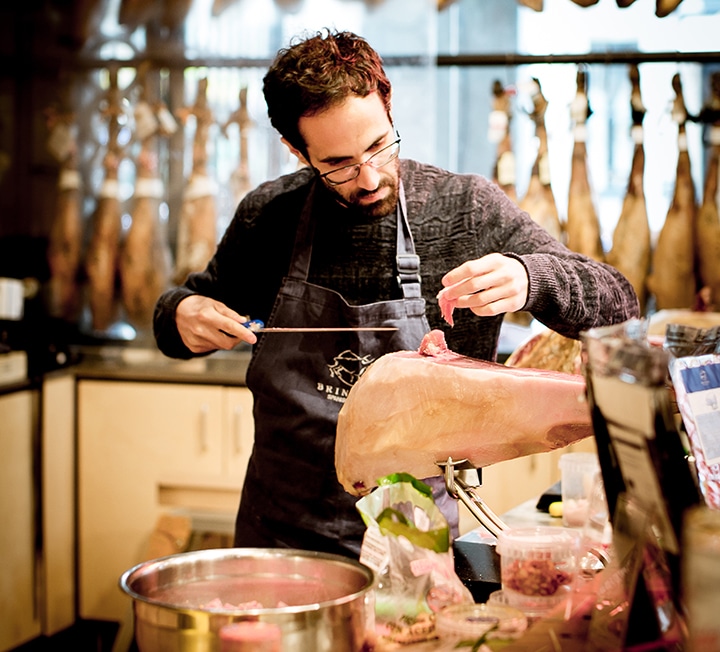
As with the Iberian black pig used for this, there is much to be written – and not so much room for it here. In brief, then, the creme de la creme of Spanish jamónes are those that fall under the four classified grades of jamón ibérico. Diet, breed and living conditions determine which grade of jamón their meat will become, though the common theme of the highest quality (jamón ibérico de bellota) is that those pigs were fed on acorns.
Jamón ibérico differs in taste and texture depending not just on its breeding and feeding grade, but also the area the leg is reared and cured in, and the length of time it has been dried.
Clear as mud? Frankly, the best thing to do to clear this all up is to head to Brindisa to taste the three or four different hams they have been carving at any one time, decide which you like best (is it sweet, nutty, rich?), and take a pack of freshly carved meat home.
It should also be noted that other Spanish hams are available. Serrano ham, ‘mountain ham’ cured from anything other than an Iberian black pig, is less expensive, but often still of a good quality.
Other muscle meats
— Lomo: The loin of a pig. Whereas Italian cured loin tends to include a thick piece of back fat over the top (it looks much like back bacon or a bacon chop), Spanish lomo looks more like a lean cylinder of meat; the eye of the chop. Very often the lomo will be dusted with chorizo. Though the lack of a layer of fat might in theory lead to a particularly lean meat, the loins of Iberian black pigs are rippled with intramuscular fat, and so are still a joy to eat once cured and dried. In some regions – like Extremadura – two loins are placed together and encased like a sausage. This is known as ‘lomo doblado’.
— Belly, coppa: Cured belly (pancetta and bacon) and collar (coppa-style) meats do exist in Spain, though they’re not as quintessentially Spanish as other varieties mentioned here.
Sausages
— Chorizo: Not so much a type of sausage, more a genre: chorizo can be semi-cured (so need to be cooked), fully cured and dried, smoked, hot, spicy, sweet, super fatty or fairly lean, thinly sliced or thickly chunked, made from Iberian black pigs, or any other pig, and made all over Spain (and beyond). The thing that links them all is paprika. As with jamón, head to Brindisa and engross yourself in their rusty-coloured meat counter and fridges.
— Chistorra: A thin ‘snacking’ style of chorizo made in the Basque Country and Navarre region – perhaps areas traditionally suited to sausages that cure and dry quickly.
— Fuet: A hard, usually relatively thin and long sausage from Catalonia. Typically, the casing will be covered in a white mould. The meat is finely ground, dried to quite a firm texture, and characteristically porky, with just black pepper and a little garlic as the seasoning.
— Salchichón: Also relatively finely ground pork, and generally flavoured only with black pepper and garlic. But a slightly wider sausage than fuet. Sometimes smoked.
— Morcon: Difficult to know whether this should be labelled a sausage or a muscle meat, such is the size of meat pieces pressed within the sausage-shaped casing. It’s an Extremaduran speciality, so made with the pork of Iberian black pig, and laced with a little paprika too.
— Morcilla: Spanish blood sausage, often (but not always) bulked up with short grain rice and usually more heavily spiced than a classic British black pudding. Huge variety across regions. Generally an ingredient to be cooked, though pre-cooked sausages and pastes exist too.
Spreadable
— Sobrasada: A fully cured, spreadable style of cured meat, similar to Italian nduja, except that the redness of sobrasada comes from typically mild paprika rather than fresh and fiery Calabrian chillies. Spread on toast or crackers, or use to flavour tomato or cream sauces.
Non-pork-based meats
– Cecina: Some Spanish cured meats are non-pork based. Perhaps the best-known is cecina, which is cured, air-dried and sometimes smoked beef butchered from the muscles in the hind leg of a cow. It’s usually quite dry and intensely flavoured and needs to be sliced very finely. Northwest Spain is a particular producer of cecina – an area, as it happens, where Iberian pigs are not farmed. This area also produces chorizo using both beef (de vaca) and ox (de buey).
The ultimate board of Spanish charcutería
If you plan on compiling a Spanish meat board, it’d be worth trying to balance the amount of paprika and also the particular richness of Spanish charcutería, so as not to blast away your taste buds. I’d personally limit the board to just three different meats: perhaps a lomo, a chorizo and some Cecina – plus a separate plateful of jamón ibérico de bellota, served at body temperature.
Where to shop for Spanish charcutería at Borough Market
At Brindisa, of course! An emporium of Spanish produce and the importers of the finest charcutería.
Read Ed’s recipe for hot smoked chorizo croquetas.
Cut & dried: Spanish charcutería
Ed Smith takes a look at the nature of Spanish charcutería and explains what distinguishes this country’s cured meats from other classic European traditions


“A PIG’S SENSE OF SMELL IS SEVEN TIMES MORE DEVELOPED THAN A DOG’S, BUT YOU CAN’T TRAIN IT NOT TO EAT THE TRUFFLES!”
Interview: Clare Finney
Are the truffles you source farmed or wild?
Both. At Tartufaia, our Australian truffles are farmed – truffle farms in Australia are a relatively recent thing but have done remarkably well – as are most of the ones we get from Spain. That said, the very concept of truffle farms is a grey area, because they are so unreliable. The truffle, which grows underground around the roots of a tree, is a very weak fungus, so other fungi are prone to take over. You can’t use fungicides or pesticides to stop other fungi establishing themselves, as that would kill the truffles as well. This is good in that it keeps producers in check, but it does make it all very unpredictable: 60 per cent of truffle farms fail, and you can’t farm white truffles at all, so we are also reliant on the natural woodlands. Eighty per cent of the truffles we get from Italy are wild.
Which do you prefer?
When the wild truffles are good, they are better – but it is hard to have consistency, which is what chefs are after. Personally, I like the wild ones. The farms are sustainable in the sense that you are keeping a patch of woodland and irrigating it, but it is still a monoculture and that is not the best way to go about faming. If they are planting oak, they are planting all oak. If they are planting poplar, it is all poplar. Moreover, they will have cleared natural woodland in order to do this. With wild truffles, you are making natural woodland work for you, just as it is. It’s fenced to prevent wild boars, but no trees or plants are removed.
Are pigs still used to hunt wild truffles?
There are a few people in France and Turkey who still work with pigs. Their sense of smell is seven times more developed than a dog, but you can’t train a pig not to eat the truffles. You have to keep them on a leash, and physically pull them back. Dogs can be trained not to eat the truffles they find. Of course, this makes trained dogs very expensive – up to 10 or 12 grand for a six-month-old puppy. There’s an old joke in truffle areas that suppliers look after their dogs better than their wives.
How do you sniff out the best truffle suppliers?
In most food businesses, suppliers find you. When I first got into the truffle business it was the other way around – it was all about the connections. It wasn’t a matter of money; you had to know the families and the people involved on a personal level. My first close supplier, with whom I started in 2006, was in his sixties. He’d supplied the same families for 40 years, and each one was entitled to a quota. The only reason we were able to get in there was because one of his customers died and his sons weren’t interested in the truffle business, so their quota was up for grabs. My dad was a friend of this guy, so he was able to slip in there. In some areas this is still the case, particularly in France, but it’s been changing as more money has come into the industry and black truffle farms in Spain and Australia have proved so successful.
Are truffles easier to source than they once were, then?
At a certain point money does start to talk. It is much easier, especially for us, as we’re established now and people know us. From now until the white truffle season starts in September, suppliers will be approaching us every week, but you have to be careful who you work with because 80 per cent of new suppliers go bust within a couple of months. People see it as an opportunity to make money quickly, then find they can’t manage supply and demand: they buy too much, and waste money, or they fail to meet the demands of their buyers. The hardest part of our job is keeping a supply chain at a certain standard, because our customers are used to a certain quality. Having a good relationship with your suppliers is still so important: with perishable products, at those prices, there is a certain level of trust involved.
How do you judge the quality of truffles?
Sometimes there are worms in truffles. That’s a normal thing for a fungus, but in the hours between being boxed and being delivered that worm can travel from truffle to truffle – so you go from one damaged truffle to 10. In Australia, suppliers scan each truffle through a machine: it’s a 48-hour trip, so they need to be sure. Once they’re here, I look at the shape and the size – mainly the shape. The rounder the better – and the more expensive – as being round, a truffle takes longer to lose weight from evaporation than if it is bobbly and has a greater surface area. It’s hard to find round wild truffles because of the roots and stones around the trees.
How do you get truffles from Italy to Borough Market? The suppliers go out at sunrise with their dogs. They get back by 10 or 11am, then go through the process of checking them and brushing most of the soil off, without getting them wet. We have someone in Italy who goes through, selecting the truffles before they are sent. They are shipped at 4pm and I get them here by 11am the next day. They can’t sit in a warehouse because they’d lose weight, so the logistics are tricky. The black truffles are a bit more robust, but the white loses 10 per cent of its weight every 24 hours. It is highly stressful, especially for those guys who deal with large quantities of truffles – you can see it in their faces by the end of the season. They are people on the edge.
Cut & dried: Spanish charcutería
Ed Smith takes a look at the nature of Spanish charcutería and explains what distinguishes this country’s cured meats from other classic European traditions


“THERE IS AN OLD SAYING ABOUT NATIVE OYSTERS: THE FIRST THING THEY THINK ABOUT IS DYING”
Interview: Viel Richardson
Richard Haward of Richard Haward’s Oysters is the seventh generation of his family to cultivate oysters in the River Blackwater, on Mersea Island, Essex. He sells the Colchester native oysters that have been harvested from the area’s creeks for thousands of years, as well as hardier Pacific oysters – also known as rock oysters – which were introduced there in the late sixties. Richard doesn’t consider himself an oyster ‘farmer’: “There are some oyster farms that use specially constructed pens and oyster bags, but our oysters live on the river bed, so it would be more accurate to say that we cultivate oysters,” he explains.
What does oyster cultivation involve?
The deep waters where the oysters spawn are often not ideal for their further development – the shell grows but they don’t fatten up, so you don’t get much meat. The flesh can be very thin and watery. So, after they’ve reached a certain size we move them to oyster beds situated in creeks that run into the main river. This seems to be the environment that produces the best quality oysters. A lot of what we do is about making sure the oysters are in the right part of the river to thrive. For that, you have to know the river intimately.
Do you treat both species of oyster the same way?
The two are very different. There is an old saying about native oysters: “The first thing they think about is dying.” They don’t like too much heat, cold or silt. The water here is brackish – a mixture of seawater and fresh water – so the salt levels can change. Native oysters struggle if the salt levels fall too much, so we have to monitor the salinity.
We also have to ensure they remain under water all the time. The river is tidal, and if they are left exposed on the foreshore at low tide, a cold snap can kill them. Rock oysters are much hardier and can cope with most changes, but – like all oysters – too much silt is bad for them. Oysters feed by filtering nutrients out of the water that flows over them, and high silt levels can make this difficult.
How do you harvest them?
We bring them up by dredging. We return the ones that are too small to the beds. We separate any that have stuck together, because oysters that have fused together will not develop properly. This is also when we move oysters between locations if we need to, and check for pests. We go out four or five days a week, so we develop a feel for the condition of the beds and we can spot any issues that are developing.
What pests do you have?
The biggest predator is the starfish. We kill any that are brought up, which sounds harsh, but it is the only effective and responsible way to control their numbers. We also remove any oysters that show signs of ‘oyster drill’ – a snail that bores into the oyster and kills them.
Isn’t dredging bad for the beds?
It is important to understand that there are different levels of dredging. We use very light dredgers. These skim across the surface of the seabed and don’t gouge into it in the way that heavier dredgers do. In fact, the way we dredge actually helps to maintain the riverbed. Recent studies have found that areas that are being worked for oyster cultivation have greater biodiversity than areas that are not. Regular light dredging helps to maintain low silt levels – it stirs the silt up, allowing it to be carried away by the tide – and this helps create a good habitat for other marine life, as well as for oysters.
Do you have to do anything else to maintain the beds?
Not really. The main thing is to stop silt from building up. If we stopped dredging, the silt would build up surprisingly quickly. Other than that, we just leave the river to its own devices.
What happens to the oysters after they’ve been harvested?
They are placed in baskets and covered with wet sacks to keep them cool and damp. When we get ashore we wash and grade them, then the oysters go into depuration tanks to flush out any toxins they might have picked up while feeding. The river water flowing through these tanks has been placed under intense ultraviolet light, which purifies the water while leaving it rich in nutrients. The oysters are cleaned as they feed.
Another old oysterman saying is: “Treat your oysters like eggs.” They are living creatures, so if you throw them about they will get stressed. Careful handling is so important. Stressed oysters don’t feed properly, making the purification process less effective.
Is there an oyster season?
Not for rock oysters, but we can only sell native oysters from 4th August to 14th May. Natives are still in very short supply. There are regeneration projects aimed at building stocks up, but that will take several years.
Are your oyster beds in good condition at the moment? Yes, they are. If we are responsible, they should remain so for the eighth generation of Hawards, who are already continuing the tradition of working the oyster beds.
Cut & dried: Spanish charcutería
Ed Smith takes a look at the nature of Spanish charcutería and explains what distinguishes this country’s cured meats from other classic European traditions


“WITH MOST SPICES, AS SOON AS YOU OPEN A SAMPLE PACK, YOUR NOSE WILL TELL YOU HOW GOOD IT IS”
Interview: Clare Finney
How do you go about selecting the raw spices you use in your blends?
Getting the right spices is key to what we do. Take cumin seeds, for example: at Spice Mountain we only buy them from a particular supplier who specialises in cumin seeds; he doesn’t deal in any other spices. He offers us several gradings of cumin seeds – because not all cumin is the same. Its quality depends on its essential oil content, its size and its shape. The oilier the seeds, the fresher the taste will be. The highest grade we sell either as whole or ground cumin, but the second grade is good for mixing into spice blends. It’s like making juice out of misshapen apples – while the taste is extremely important, those buying blended spice mixes are less concerned about the size and shape of the original seeds.
How can you tell if a spice is of sufficiently high quality?
With most spices, as soon as you open a sample pack, your nose will tell you how good it is. Some spices you may need to bite on as well: a little bite of cumin, coriander or fennel seeds will tell you if they’re fresh or old. With those spices that aren’t so easy to smell, like mustard seeds, it’s a matter of looking at the spec sheet, which comes with each sample and shows the oil content of the seed and various other results from lab testing.
There are visual clues, too: at the moment we have Sri Lankan cinnamon sticks on the stall; they’re really small and thin, which means the quality is far greater than the bigger ones that customers often assume are better. Cinnamon bark is shaved off the tree and left to dry and curl naturally. The producers then layer the sheets by hand and roll them like cigars. The tighter the rolls, the better and more intense the flavour will be. If it’s a big, thick roll, it’s too loose.
Who do you buy spices from?
Most spices I buy from suppliers. It is not realistic to buy direct from the farmers. It is not like sourcing vegetables in the UK: I can’t just buy cumin from one farm – or if I did, I’d have to buy it by the tonne. I do, though, insist that the spices I buy have been sourced from the particular countries or regions that do them best. Our turmeric, for example, comes the Gujarat region of India and our lemongrass comes from Indonesia. We have built very close relationships with the importers. We’re going to be hit a lot harder by Brexit than people imagine, because the main European hubs for spice suppliers are still in Holland and Germany.
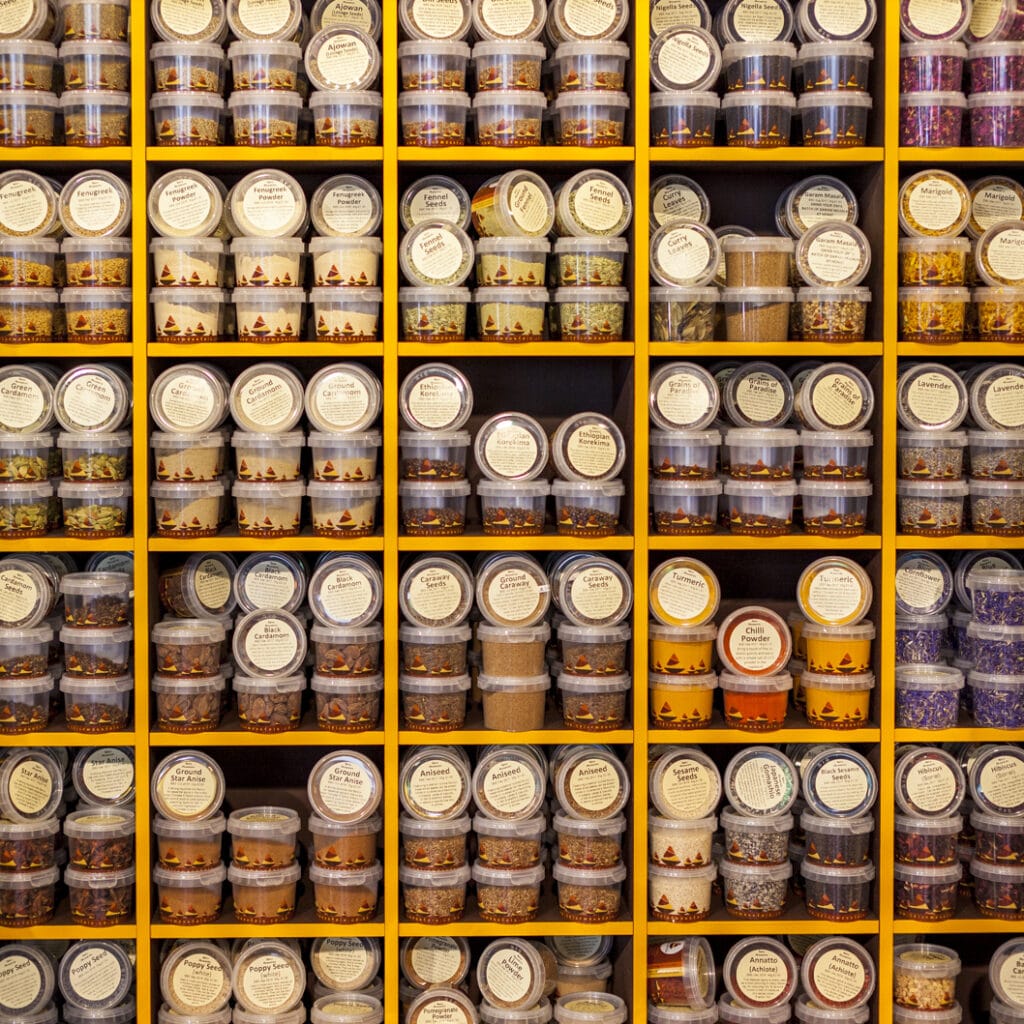
How do you get ideas for new spice blends?
Through travelling, reading and listening to our customers. Our customers are hugely varied in background, and also eat out a lot! We get lots of feedback and suggestions as to blends and variations we could make. It’s a constant conversation.
How do you devise the recipes for your blends?
A big part of what we do is trial and error, but there’s a lot of knowledge too. I don’t want to be vain, but I’ve learnt a great deal through sampling and selling spices for so many years, and I’ve developed a real feel for the proportions you need, particularly of certain strong spices. Cumin and coriander, for example, are sort of brother and sister spices, in a way. Cumin is a strong, domineering spice and coriander has a distinct flavour that some people really don’t like. The two tend to work beautifully together, but only if you get the balance right.
How important is the roasting process?
The balancing of certain spices – including cumin and coriander – often happens when you roast them. It’s then that the flavours really amalgamate. Before roasting you can taste them separately, but somehow afterwards it’s like the two spices have joined forces to create a new one. You can really taste the effects of roasting on Ethiopian blends: the spices are roasted for a long time, which means they develop a gorgeous, smoky flavour. But I don’t always roast spices, and sometimes I mix roasted and non-roasted. We rarely roast fennels seeds, for example – fennel is so lovely, it really doesn’t need anything doing to it. We’re making a Goan curry blend at the moment, and the challenge is making something gentle, mellow and woody, but with a nice sweetness. Powdered fennel seeds provide sweetness, cinnamon is sweet but woody, so those two seem to work well together.
How do you test your blends?
When we’re creating a new blend, we will use it to make a particular dish a number of times to check that it works consistently. Even after a blend has been perfected, though, it is really important not to neglect the testing, because the profile of the spices can change. The heat of the chilli can vary, for example – we might get a batch that is not so spicy – and we see turmeric changing all the time. Sometimes it’s the most beautiful shade of bright yellow, other times it’s darker. Each time that happens, we have to retest the blend, as the taste of the turmeric tends to vary with the colour. It helps that I use the blends in my own cooking – especially the Mauritian curry, Ethiopian and shichimi togarashi blends – and that my partner tries everything I make!
Are there any spice blends you can’t make?
We have had a lot of people asking about the merkén spice blend recently – it’s a smoky, peppy blend from Chile – but the main ingredient in that is aji cacho de cabra, a hot smoked chilli, and you can’t reliably get this chilli yet in the UK. Sometimes with spice blends you can cheat a little by substituting one specific ingredient with another if the profile is similar enough, but you can’t in the case of merkén. The chilli makes its flavour. Without it, it’s not merkén.
Cut & dried: Spanish charcutería
Ed Smith takes a look at the nature of Spanish charcutería and explains what distinguishes this country’s cured meats from other classic European traditions


“MUSIC IS FRANCESCO’S PASSION, BUT HE ALSO LOVES FOOD. IF HE HAS SOME NDUJA AND PASTA WITH A GUITAR NEARBY, HE IS HAPPY”
Interviews: Viel Richardson / Image: Christopher L Proctor
Giuseppe (right) on Francesco (left)
I first met Francesco back home in Calabria, in southern Italy. I had jointly inherited an abandoned cinema and was working to bring it back to life as an artistic hub. Francesco’s band heard that there might be some rehearsal space there, so he approached me in the street and asked if they could use it. At the time they only played covers, but I was building a creative space, so I told them they could only be part of it if they came back with some original material. Three months later, to their credit, they did. We became friends. At the time, he and his band were the only ones in the town who really connected with what I was trying to do, and that gave me respect for them. We have all become a bit of a family.
Francesco was hanging around the town playing music, with no real plan for the future – most of the work for the locals was as crew on passenger or merchant ships – so when I arrived at a position where I could hire a second person at the Borough Market De Calabria stall, freeing me up to make more trips back to Calabria, I suggested that he join me.
Francesco loves London, and he loves the social interactions at the Market. He is a very friendly, sociable person. That is one reason I think we work so well together: we complement each other. I am always nice to the customers, of course, but I am not the most outgoing person – Francesco is, and that’s good for me and great for the stall.
Music is Francesco’s real passion, but he also loves food. If he has some nduja and pasta with a guitar nearby, he is happy. One thing I know he really loves is the raclette sold by Kappacasein – he could happily have that every day.
Francesco on Giuseppe
Giuseppe is knowledgeable about so many things. When I first heard of him, it was because of the abandoned cinema. He was doing all the work by himself, which is amazing – it was an enormous task. My band spent a lot of time there, so we got to know each other very well. When he suggested I come to London to work for him, I thought, why not: I had learned a lot from him in my time at the cinema, so the thought of being here in London really appealed.
When we are not at work, he sometimes hangs out with me and my new band, the Gulps. Giuseppe spends a lot of time at cultural events, so we often go with him to small pubs and venues to see music. He is always looking for something new. When he finds someone he likes, he might invite them for a residency at the space back in Calabria, especially if they want to do something experimental. Some really interesting people have spent time there.
We also like hanging around at home with the band, just talking, laughing and playing music. Giuseppe has been a huge influence on our music. He is always pushing us to be more inventive – not to settle for the easy answer. We are releasing an EP later this year produced by Youth, who was the bassist in the band Killing Joke. We would never have got this far had it not been for Giuseppe pushing us to express ourselves.
Giuseppe is a very good cook. We will buy things from the Market and he will come around to my house to cook for the band. He is a firm believer in natural and organic foods, and that is all he sells here at De Calabria. He is passionate about supporting people who make their produce in ways that are good for the land. Everything you see here on the stall, Giuseppe has gone out and found the producer. He will make trips alone, deep into the mountains where many people don’t often travel, to find new products. Either he will have heard of someone making something special or he will just go into a region and see what he can find. He sees how everything is produced and only brings it to the stall if he is happy about the way it is made. It is in his blood: he is from a farming family and that was how they farmed. For him, producing really good food and caring for the environment are one and the same.
Cut & dried: Spanish charcutería
Ed Smith takes a look at the nature of Spanish charcutería and explains what distinguishes this country’s cured meats from other classic European traditions


“THE WHOLE PROCESS TAKES SIX OR SEVEN HOURS AND, PROVIDED EVERYTHING HAS GONE TO PLAN, THAT’S IT”
Interview & illustration: Ed Smith
I’ve been the head distiller at East London Liquor Company since we were founded five years ago. We have a range of three different gins: our signature, everyday house gin, and then two premium ones. We also produce vodka and, since 2015, whisky, which is rare in London – ours was the first whisky to be made in London in over a century.
Spirits are made through the distillation of alcohol and water, for which you need a still. We have four stills: one we use for gins and vodka; two are for the whisky process; and the fourth is a smaller one that we use in an R&D lab set-up. To keep things clear, I’ll focus here on the process of making gin.
Distillation is the separation of two different liquids with differing boiling points. Water boils at 100C. Pure ethanol, on the other hand, boils at about 78C. The basic premise goes that if you heat a mixture of alcohol and water to above 78C but below 100C, the alcohol will boil off and condense elsewhere, while the water stays behind. Because the flavour compounds in botanicals are soluble in alcohol but not water, they are carried in the alcohol vapour and, once condensed, they flavour the spirit.
For gin we start with a strong, near-pure alcohol, add water and botanicals, and then begin distilling. What we end up with is a concentrated gin – the distillate – which is about 82-83% ABV. We then add ‘reverse osmosis’ filtered water to bring the spirit to bottling strength (45-47%). The whole process takes six or seven hours and, provided everything has gone to plan, that’s it. After a short period of resting, the gin can be sold. We use the still twice a day, producing about 600 bottles of gin at a time.
Our gin still is made by Holstein, a German company. If we’re getting technical, it’s a ‘hybrid pot-column still’. The ‘pot’ element is essentially a 450-litre kettle, which is heated by a steam jacket. The ‘column’ allows us to control how concentrated the spirit is when we collect it as it condenses. The still is made from copper. Aside from looking great and being a good conductor of heat, the main benefit is that unwanted bi-products of fermentation such as sulphites and sulphates, which have a negative effect on flavour, react with the copper to leave a greenish-bluish-black compound on the inside of the still. This shows that the impurities have been left behind and we get a cleaner, better-tasting gin as a result.
Hot flush
First flush Darjeeling is among the most highly regarded of all the world’s teas. Clare Finney pays a visit to the Gopaldhara tea lodge in the lush hills of West Bengal to watch it being harvested and discover what it is that makes it so sought after
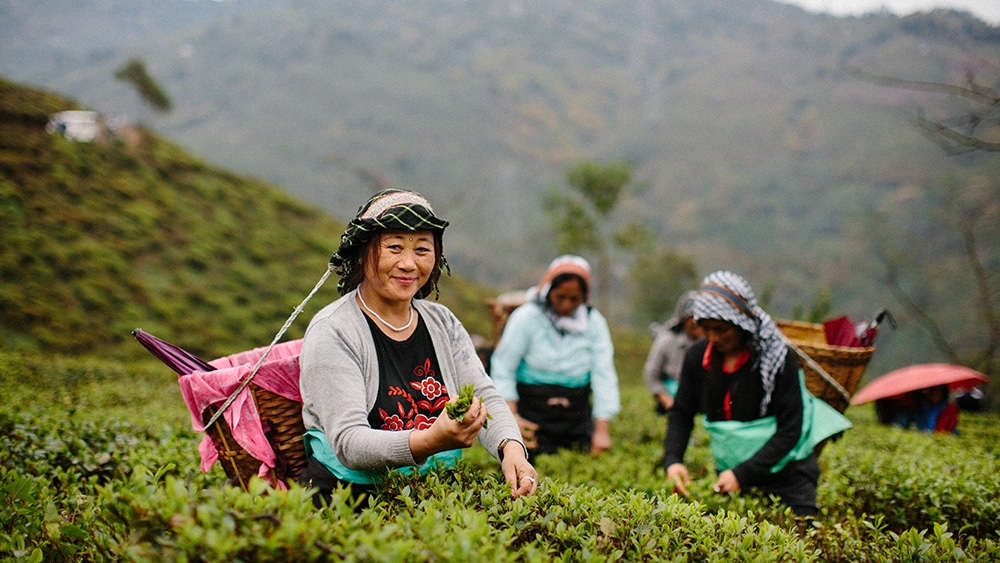

“THE MONARCH OF DARJEELING TEA IS FIRST FLUSH, HARVESTED WHEN THE FIELDS AWAKEN FROM THEIR WINTER HIBERNATION”
Images: Tom Bradley
It’s the heat that hits first: the thick, claggy heat, then the honking and fumes of the swarm of vehicles clamouring around the airport. Scanning the sea of faces as I step outside, I feel the sensory assault everyone had told me I’d experience upon first arriving in India – together with a tremor of misgiving as I take in the yellow fog and crammed, dusty buildings. My concerns are interrupted by a shout – “Clare! Over here!” – and the sight of a familiar face beaming atop a wholly unfamiliar outfit. In Borough Market, at his Tea2You stall, Ratan Mondal is one of the more smartly dressed traders, never seen without a suit jacket and chinos, but here in West Bengal his dapper ensemble has been replaced by shorts, a floppy sun hat and a safari-style shirt.
He waves a wooden walking stick and, once I’ve pushed my way through the crowds, takes my hand. “Welcome to Bagdogra! Are you hungry? Because it’s a three-hour journey up into the mountains.” I sigh with relief – not because I relish the prospect of a three-hour drive along dirt roads, but because for a confused and jetlagged moment I’d thought this pollution-choked city was the site of the tea plantation from which Ratan sources his Darjeeling tea. A hair-raising drive later and, while my nerves are on edge, my misgivings have dissipated entirely. Drawing up at Gopaldhara tea lodge, we appear to be suspended amid skeins of cool mist and waves of lush foliage, rolling down into the Mirik valley. There is no sound beyond that of chickens, cockerels and dogs. There is – imagine! – no wifi. “This is Darjeeling,” says Ratan proudly, as we step out of the jeep.
Gopaldhara is enormous. The next morning, as the sun rises, I’m reminded of the scene in the Lion King when Mufasa declares: “Everything the light touches is my kingdom.” Mahendra Kharti, the manager of Gopaldhara for the last 20 years, employs about 600 people, across over 320 hectares. His is one of 87 tea estates in the Darjeeling hills that have been accorded the right by Tea Board India to label their produce Darjeeling tea. In total, these estates cover more than 17,500 hectares of land, produce around nine million kilos of tea annually and employ around half the population of the Darjeeling district. It’s big business – and big bucks too, thanks to its prestige, popularity and the relative scarcity caused by its geographical restrictions.
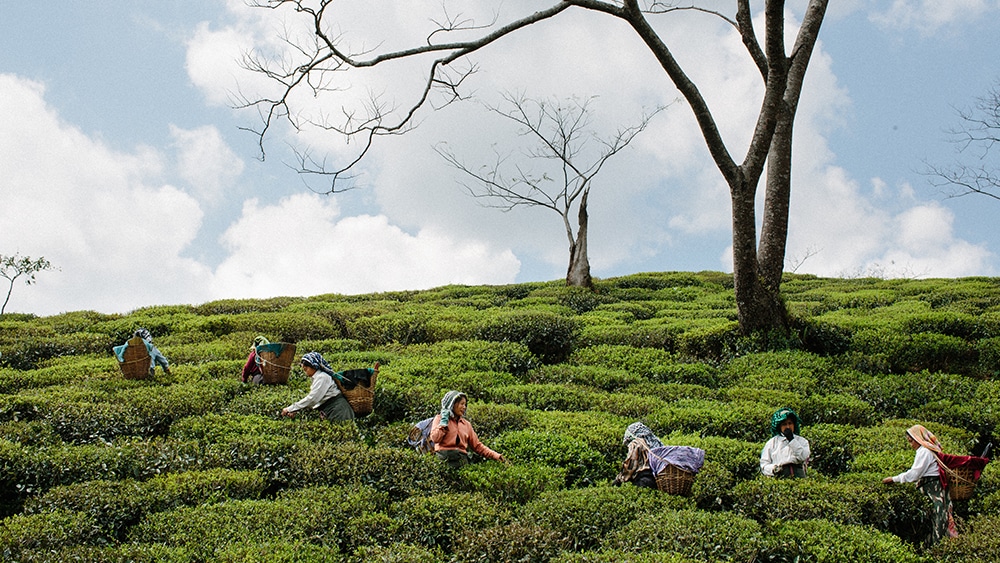
Of course, inscrutable merchants get around these rules by mixing cheaper teas in with Darjeeling and passing it off as the real McCoy. Yet competition is fierce, even among respectable buyers like Ratan. “It is a tough job I’m doing, a very tough job – but I love the competition,” he grins. “I know the palate of my customers. I have knowledge of the tea.” The art of trading tea, he says, is in balancing numbers. “The better the quality of the tea, the less of it is produced.” That’s why the first flush of Darjeeling is so sought after: it’s produced in small quantities, over a very limited period. You might be King Charles – and indeed, His Royal Highness is one of Ratan’s customers – but when he’s sold out of first flush, that’s it. Everyone has to wait until next year. “You cannot dictate the crop. You can’t sell more than is grown.”
Which is where the fine balance comes into play. Over these few weeks in March and April, Ratan needs to buy enough first flush to keep his customers sated, but not so much he has stock left into the following year. Tea has a good shelf life, about 15 months, but those customers looking for first flush Darjeeling are not looking for leaves that are a year old. “Each year I have to work out how much I can sell. And I have to get the best, too,” he says.
Across the valley, the clouds are brewing and glowering menacingly. India has seven seasons to our three, and this – the beginning of summer – features thunderstorms and lightening most mornings. “You cannot predict the weather,” says Kharti, looking at the sky with surprising calm, given its implications for today’s harvest. Already the first pickers, deceived by the early morning sunshine, have started retreating.
The heavens open. Thunder rolls. The feeble power supply in the lodge splutters out completely. It’s dramatic, but also disastrous for both our photographer Tom and for Kharti, who now stands to lose not just a morning’s picking, but a morning’s processing too. His factory sits at the bottom of the valley, just out of sight from where we’re staying. We’d planned to walk down but until the rain eases, he says, no one can go anywhere. The paths are too steep and slippery to pass by foot or by vehicle. There is nothing to do but wait and – one silver lining – drink tea.
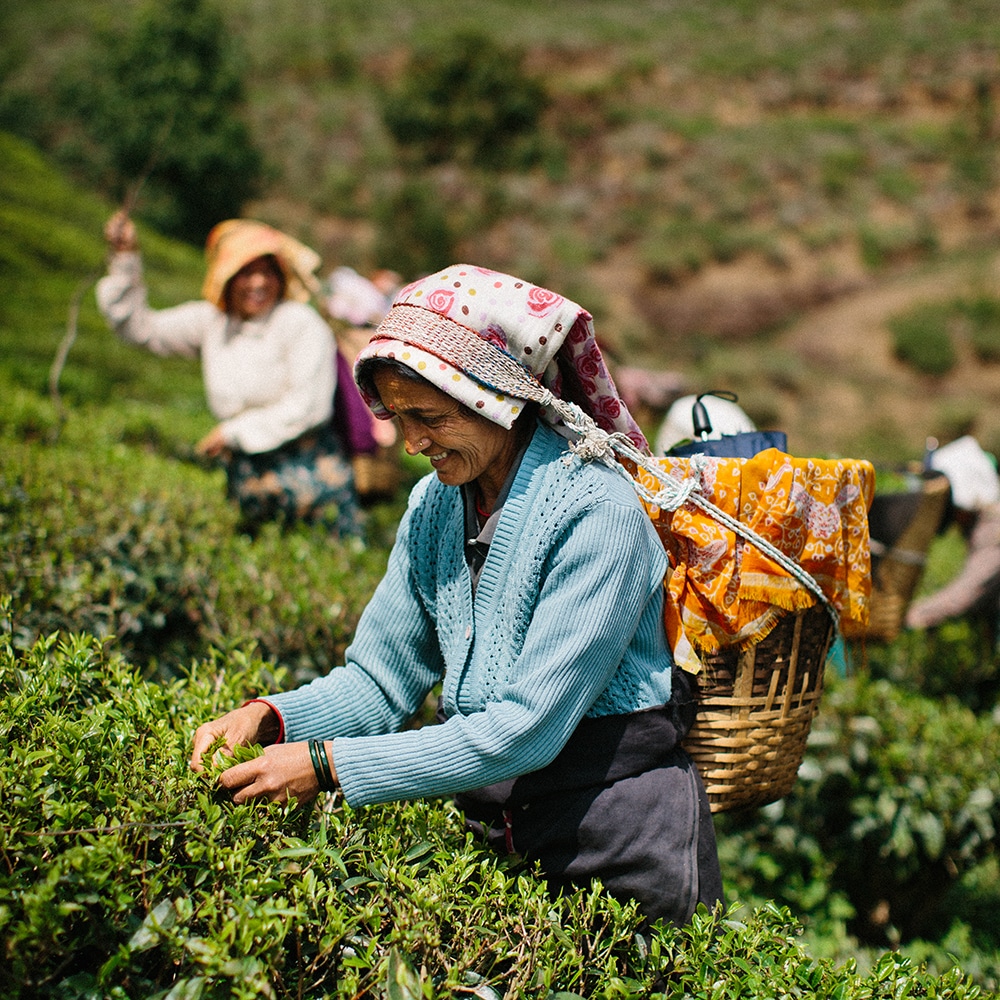
We wait with anticipation, the thunder grumbling around us, until Kharti’s housekeeper Didi emerges with a glass teapot of golden liquid. “Is this first flush Darjeeling?” we ask in hushed whispers. “Yes,” says Ratan, giggling delightedly, “but it is not very good.” I smile, wondering if his joke is lost on me – but he is in fact being entirely honest. “The best tea is exported. We don’t keep good tea in India, because abroad it has so much more value. Indian customers who want first flush? They buy it from England.” He laughs again, delightedly. “They buy it from me.”
Thus ends the first of many lessons about tea hierarchy – a hierarchy that makes the British class system look straightforward. Though all tea is the same species of plant, Camellia sinuses, it varies endlessly according to terroir, climate and how it is processed. The monarch of Darjeeling tea is first flush, harvested when the fields awaken from their winter hibernation, and is referred to as FTGFOP, ‘fine tippy golden flowery orange pekoe’ – or “far too good for ordinary people” as those in the trade jokingly have it. ‘Tippy’ refers to the tips, or buds, on the bushes; ‘golden’ to the tinge of leaves picked early in the harvest; and ‘orange pekoe’ to the fact it is whole leaf. “Orange pekoe is not a type of tea,” stresses Ratan. In the cup, FTGFOP commands delicate, fragrant flavours with astringency and beautiful sweetness. Golden flowery orange pekoe (GFOP), meanwhile, could be described as the landed gentry of Darjeeling: a whole leaf tea harvested in first flush, but with a slightly lower proportion of golden tips.
From there the tea descends in ‘class’ according to where it is harvested and how it’s processed. While most Darjeeling tea is produced using the orthodox method, meaning the leaves are kept whole and there is limited mechanical interference, outside of Darjeeling the most commonly found type of tea is produced by highly mechanical means, known as the cut, tear, curl (CTC) method. The leaves are passed through a series of teethed cylindrical rollers that crush, tear and curl the tea into small, hard bits, increasing the surface area and inducing that familiar bitter flavour. The result is piled into teabags, shipped, and served with sugar and milk.
“You don’t need milk with my tea,” boasts Ratan: indeed, to do so would be sacrilege, the equivalent of topping champagne up with lemonade or serving Parma ham with ketchup. “In the old days, the English used to lock up Darjeeling tea in their drawers. They saw it as gold dust,” he says nostalgically, “but English people don’t really know tea today.” Contrary to popular opinion, English breakfast is not a type of tea. It’s a blend of cheap black CTC teas from all over the world, picked in huge quantities. During a typical day on Gopaldhara tea garden, a picker will pick two to three kilos per person – perhaps just one, when picking the highest grade FTGFOP teas during a difficult season. “In Assam, where they are picking tea for CTC, an average picker will pick 25 to 30,” Kharti interjects somewhat disparagingly. In other words, they’ll pick indiscriminately, valuing quantity over quality, and with no thought as to the size of the leaf or its tips.
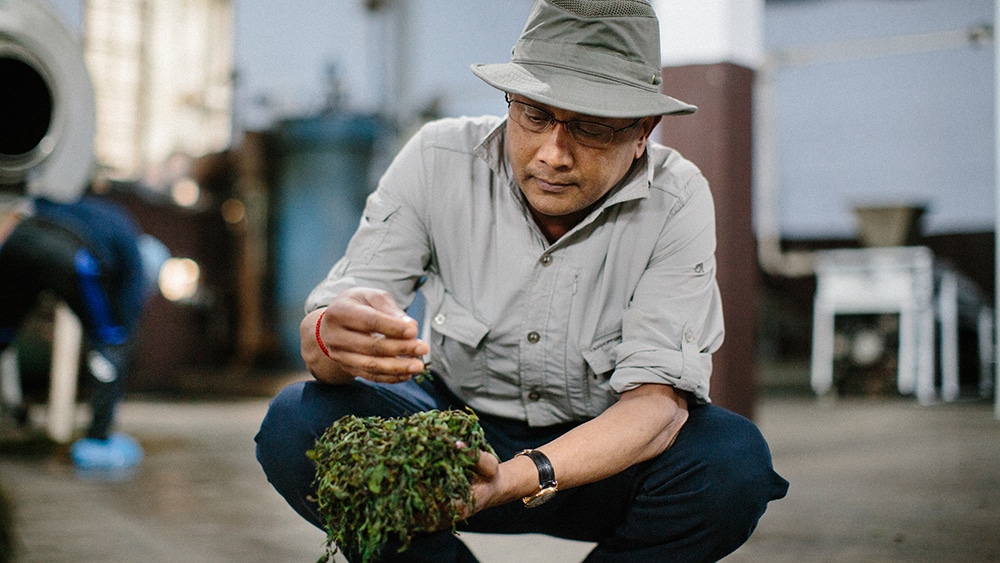
We are interrupted by the sound of birdsong. The weather seems to be turning, and within a few minutes the bell calling the pickers back to work is chiming insistently. A jeep pulls up and Kharti introduces us to his driver, “a very experienced man, who has been with me for eight years”. Within moments we are discovering why such experience matters. The Mizik Valley is steep: far steeper than the mist and green gardens suggested, and the dirt track running down to the factory is single file and edged on one side by a heart-stoppingly steep drop. What’s more, we’re reversing down it, at a pace that is far from cautious. I shut my eyes and try my best not to wonder how many accidents the driver has had or narrowly missed in the course of eight years.
“Gopaldhara Tea Estate” reads the welcome sign, in a colonial-style writing that reminds us that tea is not, after all, a traditional Indian crop, but one imposed by the British in the 19th century. Those colonial ties can be seen in the machines, half of which were made in Britain. The other, considerably shinier half are Taiwanese. On a sheet just outside the factory, the morning’s harvest is being laid out in what is now glistening sunshine. “It will sun-wither for two hours,” says Kharti, “depending on weather.” Inside, the factory is slowly warming up following the power cut, and for the next 20 minutes Kharti busies himself inspecting the various machines.
“The manager has arrived,” smiles Ratan as he watches his friend proudly. After nine years of trading, theirs is a relationship marked by respect and fairness. “He manages everything, from top to bottom. A tea manager is one of the most prestigious jobs you can have in this country – and Kharti is one of the best.” With 600 people under his care and numerous trading partnerships, Kharti speaks four languages – Nepalese, Hindi, Bengalese and English – and has a knowledge of tea Ratan says he can only aspire to. “I am his student,” he tells me modestly. “Don’t listen to him!” Kharti calls over. “Ratan is the master. He knows. He is the best.”
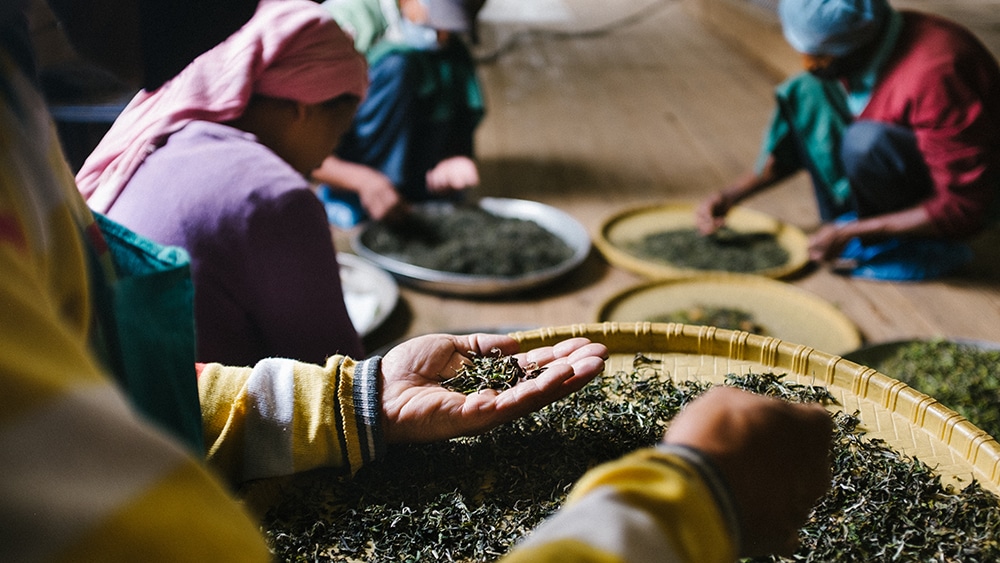
They agree to disagree and Ratan takes us upstairs, to long troughs where yesterday’s sun-withered harvest is being withered still further. This process involves blowing air through the leaves to dry them until they lose around 60 per cent of their moisture. Once supple, the now-dark green leaves will be rolled and oxidised – that is, fermented – and already there is a distinct, light but vegetal aroma rising off the withering leaves. Ratan can’t help but take a handful: “Smell that,” he says, proffering a fistful of leaves. Were Darjeeling a drug – and there are moments at which the long, curled tea leaves bear a striking resemblance to one – Ratan would probably need rehab. Mercifully for all concerned, that is where the resemblance finishes.
The depth of Ratan’s passion is echoed by everyone at Gopaldhara. It has to be. It’s a monotonous job, and there’s no step you can skip or fast forward. From picking to packaging, each stage demands care, attention and what Kharti believes is inherited skill. “You cannot teach this,” he says later that afternoon, as we observe women picking in the garden, throwing the fresh leaves expertly into the baskets on their backs. “They’ve been doing this for centuries, mother to daughter.” Though today they are under orders to pick only “two leaves and a bud, from the top of the bush – the highest quality”, they do so with remarkable speed, singing and chatting. Are they always this happy? I ask Kharti, somewhat surprised that such a seemingly tedious job could elicit such positivity. “Yes. They get a good salary. They start early, but they finish early, and medical care and childcare are free.”
The amount the pickers pick is weighed at the weighing station (a small platform in the garden, with an enormous set of old fashioned scales), and they are paid accordingly. India is deeply hierarchal, a compound effect of colonialism and the caste system – but while this hierarchy is manifest in the many managerial and supervisor positions in the garden, the plantation’s structures do not seem exploitative. The women work in the fields; the men work in the factory; the children are at school until their teens and then, in most cases, at college or university. The youngest age of any worker, factory or picker, is “no less than 22 or 23”.
Back in the factory, the driers are blasting out heat, the rolling machines are whirring, and the withered leaves from yesterday’s harvest are in a fanning machine to halt oxidation. “All black tea is oxidised, or fermented,” explains Kharti – in contrast to white tea, which is not fermented at all, and green tea which is only fermented slightly – “but my tea is not fermented quite as fully as most black teas.” How long the leaves are fanned for depends on how they have withered, which in turn depends on where they have come from. Much like how single-origin winemakers bottle their grapes according to areas of the vineyard, each part of the garden is picked and processed separately. “The leaf needs looking after, like a little baby,” says Kharti, catching a couple of leaves out of the fanning machine and feeling them. “These are ready,” he nods to the chap operating the machine.
Next up is the rolling machine: a cross between a roulette and a steel drum which curls the withered leaves tightly “to lock in the flavour”, Ratan shouts over the whirring. The spinning leaves are mesmerising, as is the deftness of Kharti’s eye as he judges when to stop and when to keep rolling, nodding and gesturing like the Willy Wonka of tea. “The timing is everything,” he says, as the machine slows to a stop and we stoop to inspect the leaves, tightly furled and wound together. “Each batch looks the same to you, right?” smiles Ratan. “But that is the game, for me. Because each will make for a very different tasting tea.”
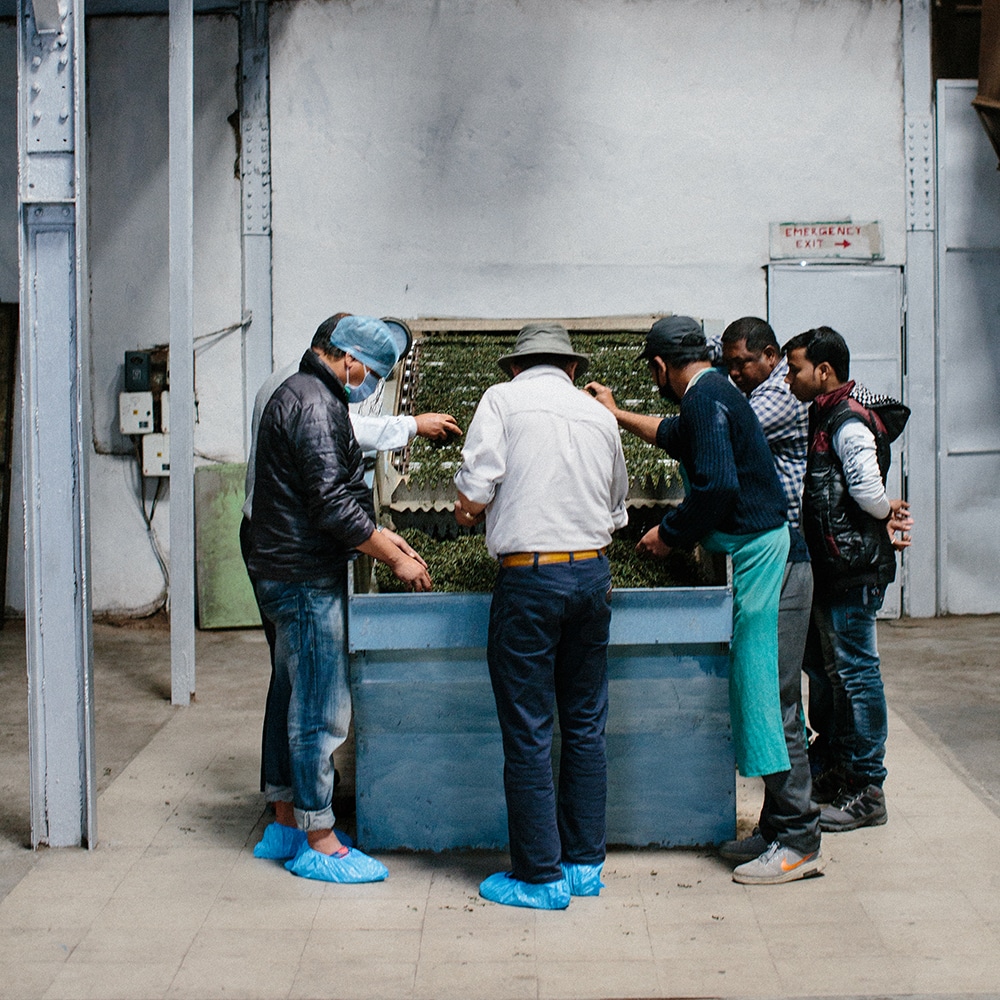
Trespassing twigs are picked out, as are leaves that have not rolled properly. Big knots of leaves are carefully disentangled. “It’s like my hair in the morning,” I comment, as I help Kharti and Ratan with sorting, prior to the leaves entering the drying machine. The tea enters the drier looking like seaweed; it emerges recognisably as tea, dark and dry and ready for sampling – for Ratan will not make an offer on any batch without tasting it. “What’s your favourite part of the process?” I ask Kharti, as we watch the tea tumble from the drier into waiting trays. “I enjoy it all,” he replies. “If you do not enjoy it, you cannot make good tea.”
The leaves are moved to the packaging room, where patient workers comb through them one last time in bamboo trays before bagging them up for shipping. They wear masks and shoe protectors not to shield themselves (the amount of dust rising from leaves of this size is minimal to non-existent) but to protect the tea from any dirt they might have brought in from outside. In the meantime, Ratan heads to Kharti’s office for the tasting ritual: nine batches, nine cups, nine separate displays of dramatic sniffing, swilling and spitting. For someone whose tea custom is desk-based, with thirsty gulps conducted amid intermittent chatter and typing, such theatrics seem extraordinary – but when it comes to Darjeeling, the fair comparison is not your morning cuppa but the ceremonial tasting of fine wines.
“Same-day tasting is tough,” Ratan continues, halfway through the tasting. Like wine, tea continues to develop its flavour post-packaging, so freshly processed tea has a shallower flavour profile than it will do in a couple of weeks’ time. That’s where Ratan’s experience comes in. What to me still tastes like water, to him might have the makings of something marvellous. At one moment he stops and laughs. “This is the one,” he exclaims, his eyes shining. “The smell of it. It is the tea god. This one is mine.” The negotiations between Ratan and Kharti are friendly, but protracted – so Tom and I seize the chance to taste some tea ourselves, using Kharti’s framed Tea Tasters Guide as a reference point. It covers flavour, aroma, texture and aftertaste, with words like ‘muscatel’, ‘vegetal’, ‘briskness’ and ‘brightness’ peppered throughout. We fumble for the words to describe what we’re tasting, much like I do with the wine list in a restaurant I can’t really afford to be in. “Is this… vegetal?” we ask each other, baffled – and Ratan, having secured a price he is happy with, overhears us and smiles. “Tea tasters talk too much. You can describe the taste to a point, but beyond that…” he shrugs. “It is a feeling inside that is beyond words” – and with the inimitable taste and fragrance of first flush Darjeeling suffusing my senses, this seems a fitting place for this particular flow of words to bow out.
Discover more
Cut & dried: Spanish charcutería
Ed Smith takes a look at the nature of Spanish charcutería and explains what distinguishes this country’s cured meats from other classic European traditions


“JUST AS TOAST IS OUR GO-TO SNACKAGE IN THE UK, IN SOUTHERN INDIA DOSAS ARE DEVOURED WHENEVER HUNGER STRIKES”
Illustration: Ed Smith
Cooking a dosa is a masterclass in the transformation of humble ingredients into culinary catnip. Ground lentils and rice are stirred together with water to make a batter, left to ferment, then fried into pancakes. Crisp on the outside and vaguely spongy within (all the better for soaking up flavour), it is unsurprising that the dosa ranks among southern India’s culinary treasures.
Just as toast is our go-to snackage in the UK, dosas are considered a breakfast favourite in parts of India but in practice, they are generally devoured whenever hunger strikes. Comforting and filling, the batter can be made from a slew of ingredients that yield different textures, colours and flavours. Often, they’re wrapped around spiced mashed vegetables to make a divine edible pillow, then accessorised with chutney and perhaps a wet and soupy sambar for dunking.
“In all southern Indian kitchens dosas are really important,” says Gaurav Gautam, director of Borough Market Kitchen’s Horn OK Please stand, which fries, folds and fills hundreds of dosas for ravenous customers each week. “A lot of people will keep a jug of dosa batter ready in the fridge so it’s ready to go when they’re hungry.”
Dosas are commonly made with rice and urad lentils, sometimes scented with fenugreek. But, really, dosas aren’t about sticking to a single set of rules. Rava dosas are made with semolina and rice, imbued with cumin, ginger, asafoetida and nuts. Nariyal dosas come with coconut chutney, while a love-in of flour, rice flour, coconut, jaggery and sometimes cardamom give rise to jaggery dosas.
At Horn OK Please, Gaurav’s dosa dishes are a pan-India amalgam. The dosas themselves are made with moong beans and – no fermentation required! – mixed with rice flour and a little turmeric to make a thick and brightly hued batter, a specialty of Andhra Pradesh in south-eastern India. Potato is a common dosa filling, but Gaurav honours a family recipe from northern India that involves cooking red and white potatoes low and slow, then spiking them with tangy dried mango powder. Served with chana chaat, a spiced chickpea stew, the whole thing is garlanded with date and tamarind chutney and pomegranate seeds. A national treasure indeed.
Urad lentils and rice
Dosas are traditionally made with urad lentils and rice, sometimes fenugreek seeds, soaked in water overnight to ferment and develop flavour. The mixture is finely ground to a paste, then enough water is added (and sometimes a little butter) to make a batter of the perfect consistency – stout enough to produce pancakes that can carry the load of a filling, but somehow airy as well.
Fat
Oil or ghee is used to grease the tawa or hotplate. The batter is spread out into a thin circle and cooked briefly until crisp, often on just one side, then folded or rolled around fillings.
Vegetables
Fillings often comprise boiled and mashed vegetables made flamboyantly flavourful with spices like curry leaves, ginger, chillies, asafoetida and turmeric.
Chutneys
Rowdy accompaniments convey an extra layer of deliciousness. Chutneys might be of a coriander, coconut, mint or mango inclination. Many dosa devotees claim that sambar – a hot and spicy soupy dish spiked with tamarind – is also obligatory.
Cut & dried: Spanish charcutería
Ed Smith takes a look at the nature of Spanish charcutería and explains what distinguishes this country’s cured meats from other classic European traditions


“IT’S THE ETERNAL PROBLEM OF SMOKED FISH – EATING THEM TAKES MINUTES, BUT THEIR PRESENCE LINGERS FOR DAYS”
I live in a block in which one of the flats is occupied by a lovely family whose diet revolves around two rich, spicy, slow-cooked dishes, eaten in rotation, one emitting the pungent funk of offal, the other the assertive whiff of preserved fish. Both provide a full sensory assault. On fish days in particular, that heady smell moves through the building like an angry ghost, passing through doors and walls and dripping its salty ectoplasm onto everything. Insisting that a neighbour swap their delicious food for something much blander is out of the question, so instead the block’s other occupants have come to the unspoken agreement that the windows on our landings should be left wide open, regardless of weather or risk of burglary.
This is, of course, the eternal problem of smoked or salted fish – the fact that eating them takes just minutes, but their presence lingers for days. My dad’s favourite food is kippers, but at an early stage in his marriage he realised he had to choose between kippers and, well, marriage, and so only eats them in hotels. Even storage is an issue. I once had a bitter argument with a flatmate whose stash of saltfish in the fridge infused its scent into our milk so thoroughly that my breakfast cereal ended up tasting like a hot day at Billingsgate.
Some fish, though, are worth all the opprobrium and tainted laundry. These traditional cured, hot-smoked haddock from Oak & Smoke, sourced from a traditional producer on the east coast of Scotland, are a thing of wonder, soft, creamy and smoothly smoky. I like to smear them with butter then heat them under the grill, something I can do without risk: everyone else in the block will blame my neighbours. And they’re so good that if my morning porridge ends up offering a little taste memory, that’s not necessarily a bad thing.
Cut & dried: Spanish charcutería
Ed Smith takes a look at the nature of Spanish charcutería and explains what distinguishes this country’s cured meats from other classic European traditions


“YOU HAVE TO ACCEPT THAT SOME THINGS ARE NOT GOING TO WORK. BUT YOU LEARN SOMETHING FROM EVERY BATCH”
Images: Joseph Fox
“As the cows are being milked, some of it is fed directly into our milk van. We then drive it 20 yards from the milking sheds to our cheesemaking rooms…”
Dave Holton, co-founder and head cheesemaker at Blackwoods Cheese Company, talks me through this shortest of short supply chains as we stroll past a group of contented-looking cows, chewing away in a field. “Once there, the milk goes straight into our cheesemaking vats; there is no storage involved,” he continues. “In fact, it doesn’t even have time to cool down. All we do is add the cheese starter cultures and the cheesemaking process begins – we don’t have to apply heat to get things going. It is one of the many lovely things about being here.”
‘Here’ is a converted farm building deep in the Kent countryside. The cows belong to a small-scale organic dairy farmer, and Blackwoods Cheese Company’s cheesemaking facility is conveniently located in a red brick farm building on the same country estate.
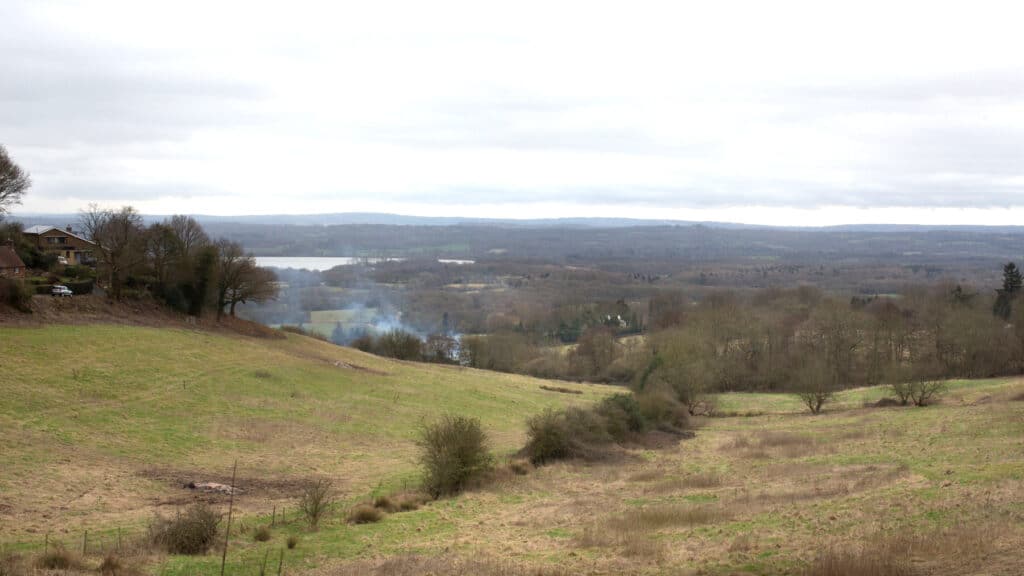
“As a cheesemaker, everything starts with the milk: you can’t make great cheese with poor milk,” Dave explains. “The farm has a three-way breeding programme which uses Holstein Friesians, the classic black and white dairy cows we all know; Montbéliarde, a French breed traditionally used to make comte in the Alps; and Swedish Reds, which add a bit more butterfat to the milk. This produces beautiful milk, which is perfect for us to work with.”
The spectacularly short journey from udder to cheesemaking facility keeps the solids and proteins in the milk in perfect condition, lending Blackwoods’ finished cheeses their clean, highly defined flavours.
Standing here, looking out across the lush green fields of the Garden of England, it is difficult to imagine a more bucolic setting for an artisan English cheesemaker, creating classic English cheeses. But not everything is quite as it seems.
Far from being a man of the English countryside, Dave grew up in the Yarra Valley, near Melbourne – about as far from this green and pleasant land as it’s possible to get. His was a region with a rich dairy tradition. “I did a degree in environmental earth science, but soon realised that it wasn’t the field for me,” he says. “One of my mates was a cheesemaker at the local dairy, and I mentioned at a party that I was looking to work in food. It turned out that the dairy had a job going. I started three days later.”
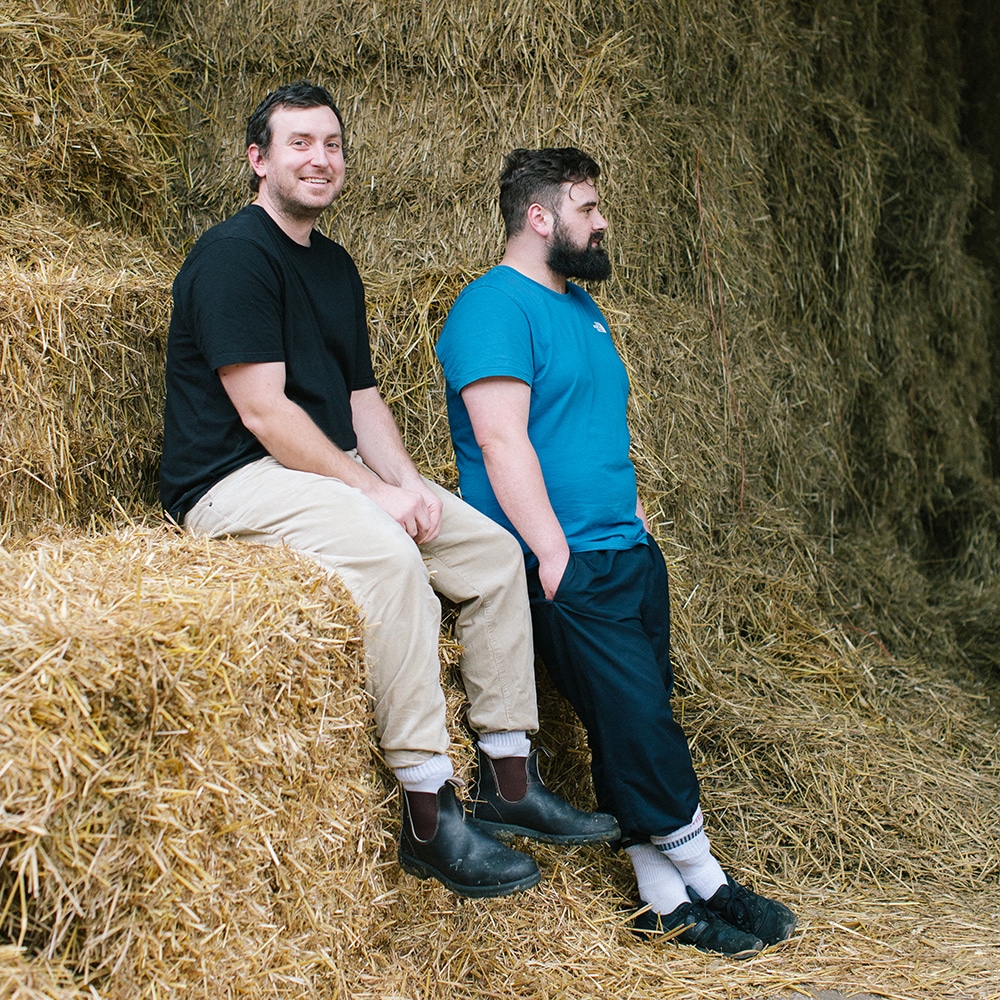
It was his desire to experience cheesemaking in other parts of the world that brought Dave to England. “Learning to make cheese is both an art and a science,” he says. “You have four ingredients: milk, a cheese culture, rennet and salt. The process is as much about working with time, temperature and the environment as it is about manipulating the ingredients. It may take weeks, months or even years to see how changes in your process affect the final cheese. I was really curious to see how other people worked.”
Together with his good friend Cameron Rowan, Dave planned a trip to Europe. The idea was to visit cheesemakers and cheesemongers in France, Spain and the Netherlands, as well as Britain. They would eat cheese, make friends, drink wine and generally tour the continent, picking up what they could from the artisans they met along the way. They would then return to Australia, laden with this new-found knowledge, to start making cheeses of their own.
“Before leaving Australia, I had set up 10 days’ work here in London, so my first experience of European cheese was working behind the counter at Neal’s Yard Dairy in Borough Market during the Christmas rush – which I can only define as bedlam,” Dave recalls.
Those 10 days at Neal’s Yard Dairy somehow turned into three years, during which time Dave also managed to fit in an internship with the Mons affineurs in France.
While their plans for a European tour may have been shelved, the urge to make cheese was still strong in Dave and Cameron, so they joined up with another childhood friend, Rory Holwerda, and Tim Jarvis (the lone Brit), all of whom had worked at Neal’s Yard Dairy, to make their first tentative steps into production. “We named the company after the road I grew up on.” Blackwoods Cheese Co was born.
The gang’s first experiments were with ‘Persian fetta’, which according to Dave is a style of cheese developed by an Australian cheesemaker who had travelled through Iran in the 1970s and fallen in love with the local feta-style cheeses. Hugely popular in Australia, Persian fetta had proved impossible to find in the UK.
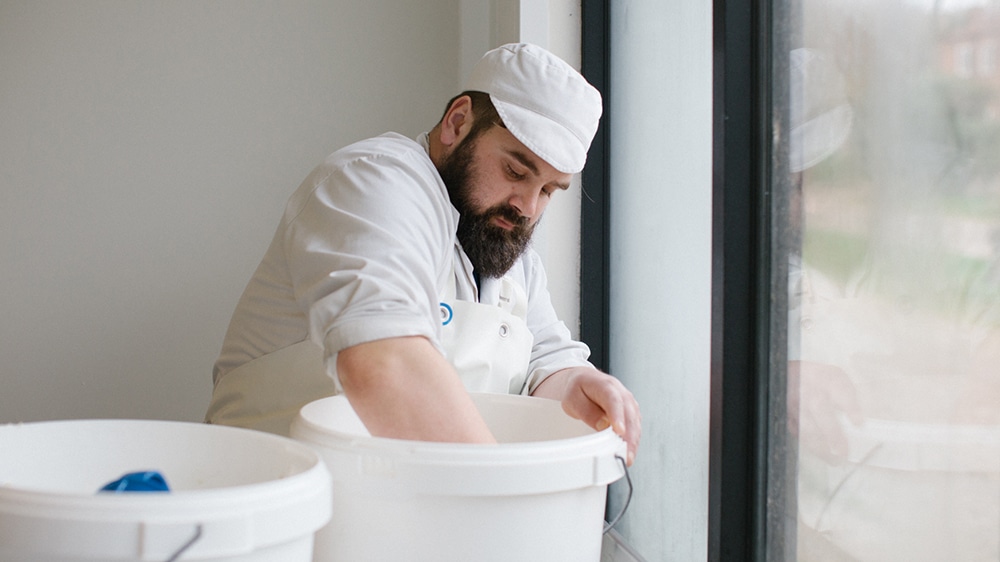
“We thought that if we missed that taste, then other Australians might feel the same,” Dave explains. “We adapted our process to work in local conditions and made a couple of tweaks, the main one being the use of raw milk, which is illegal in Australia. It is still recognisable, though, which is really gratifying to hear from Australians over here who have found us.”
However, if you head over to Blackwoods’ Borough Market stall, there won’t be a jar with the name ‘Persian fetta’ anywhere in sight. “As we are in the EU, the name ‘feta’ is protected, so we called it Graceburn after the river that flows through the town where we grew up,” Dave reveals.
“Being made from cow’s milk, it is less salty than a traditional feta, with a deeper, more rounded flavour. The olive oil we use is flavoured with peppercorns, thyme and garlic and you get some of those flavours coming through as well – it is a lovely cheese.” A bronze medal at the British Cheese Awards in 2015 would suggest that Dave is not alone in his assessment.
Dave’s plan was to have some fun with his mates making cheese in the frozen north, then head back home to make even more cheese in the Aussie sun. But life – as it so often does – had different ideas. While Cameron chose to fly back to Australia, and Rory – clearly deciding that London wasn’t quite far enough away from Melbourne – moved north to Scotland, Dave met and married an English girl and England became his permanent home. So, while Cameron and Rory still have a share in the business, Dave and Tim are now Blackwoods’ driving force and full-time cheesemakers.
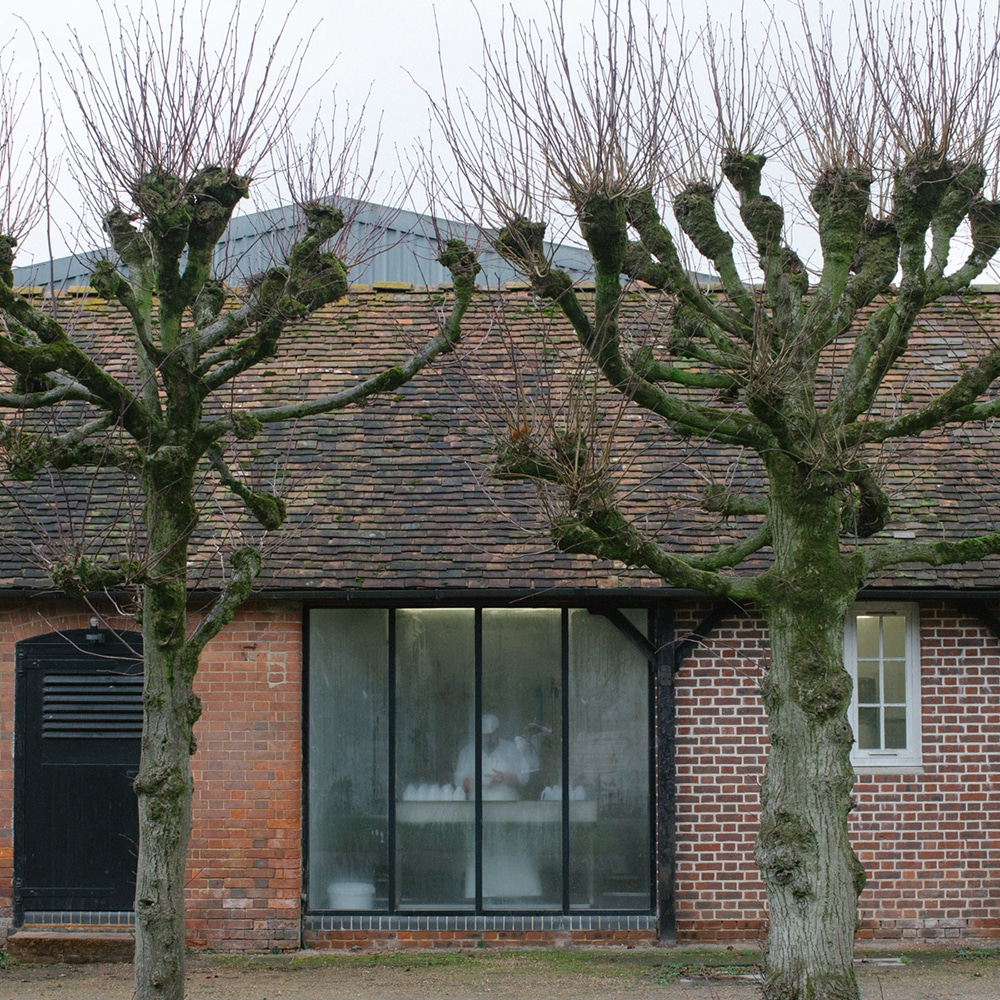
In contrast to their current rural idyll, Blackwoods’ first dedicated production space was in the far more prosaic surroundings of an industrial estate in Brockley, south London. The move to Kent was a logical step: the team used to drive down here a couple of times a week anyway, loading 500 litres of milk in the van before driving the 40 miles back to London.
As well as its proximity to a supply of superb milk, what this converted farm building offered was a space in which the cheesemakers could truly express themselves, creating cheeses that reflect their characters and sense of craftsmanship. “Our core ethos has become one of not interfering in the process too much.” Dave explains. “It is all about following their development and seeing where they take us. We don’t want to end up with cheeses that are clones of something else.”
Dave points out that all artisanal cheeses are quite literally a product of their environment, so the new surroundings allow the cheesemakers to explore new tastes and textures. “Everywhere you go there are microbes in the air that will interact with cheese as it is being made, and these will vary in different areas,” Tim interjects.
Dave wholeheartedly agrees. “It is like making wine, but we have a different vintage every day – the milk and environmental conditions will never be exactly the same two days in a row. Working with these changes is at the heart of any artisanal production. It means we have the chance to create something that is entirely our own.”
The pair are particularly fascinated by soft cheeses. “It is a very involved process which works over a much shorter time frame than the hard cheeses,” says Dave. “Because things happen quickly, you have to pay constant close attention to things like humidity, temperature, air quality. You have to judge just the right time to wash the cheeses with brine, which we do to encourage the types of moulds we are after, and create the environment they need to thrive. This level of involvement gives the cheesemaker a real connection with the cheese.”
The process involves plenty of trial and error. “You just have to accept that some things are not going to work. But you learn something from every batch, and knowing what doesn’t work is just as important as knowing what does. For each new batch, you tweak different elements. You build on the good bits, then start again.”
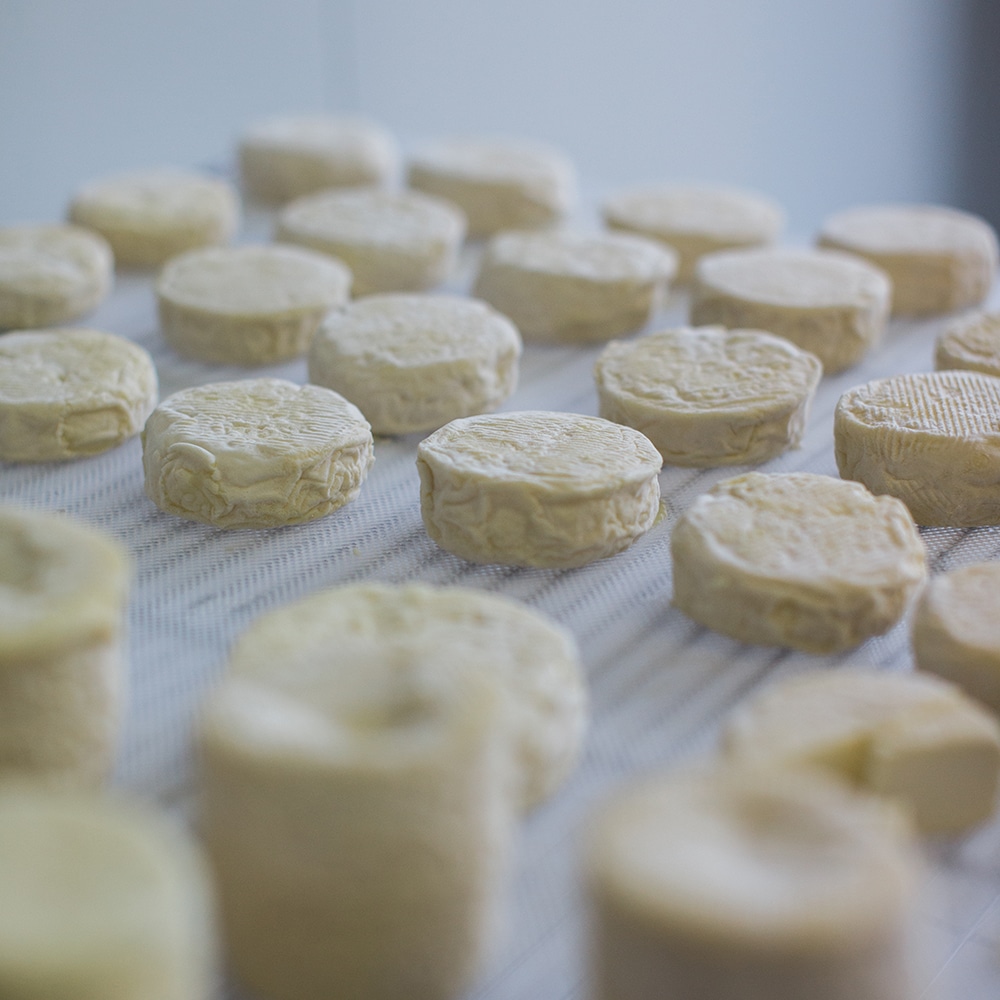
“But never make too many changes at once,” Tim adds with a wry grin. “The worst scenario is to have a batch that turns up with a wonderful texture and lovely flavours, but then you struggle to recreate it because you can’t define what changes were key to the improvement. Communication is key. With so many variables, it is vital each of us knows what the other is doing. That’s why there are notebooks everywhere.”
While he may be firmly ensconced in the Kentish countryside, in two cheeses with the unlikely names of Edmund Tew and William Heaps, Dave is able to demonstrate that he has not entirely lost touch with his Aussie roots.
“They are part of our ‘Convict’ series – cheeses named after convicts who were transported to Australia for stealing cheese,” Dave says with a huge grin spreading across his face. “The chance for an Aussie to make cheeses in the UK that are illegal to produce in Australia, and name them after convicts sent to Australia for stealing cheese in Britain, was just too good to pass up.”
Given the enthusiasm that British judges once had for dishing out this particular punishment, there is certainly scope for a few more cheeses in the series. With such wonderful milk, in such a beautiful place, and with a sense of adventure that constantly pushes them forward, the likelihood of other unfortunate cheese-stealing miscreants finding themselved immortalised in the tastes and textures conjured up by Blackwoods Cheese Company seems high.
